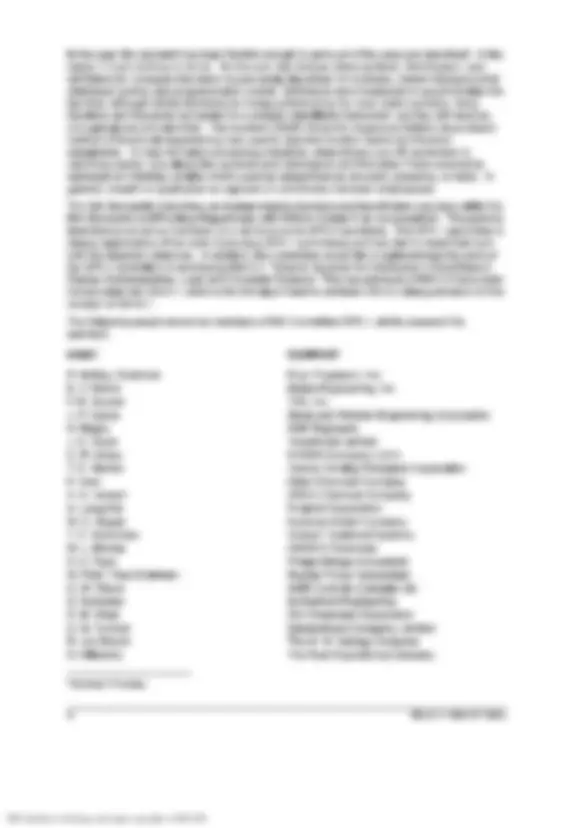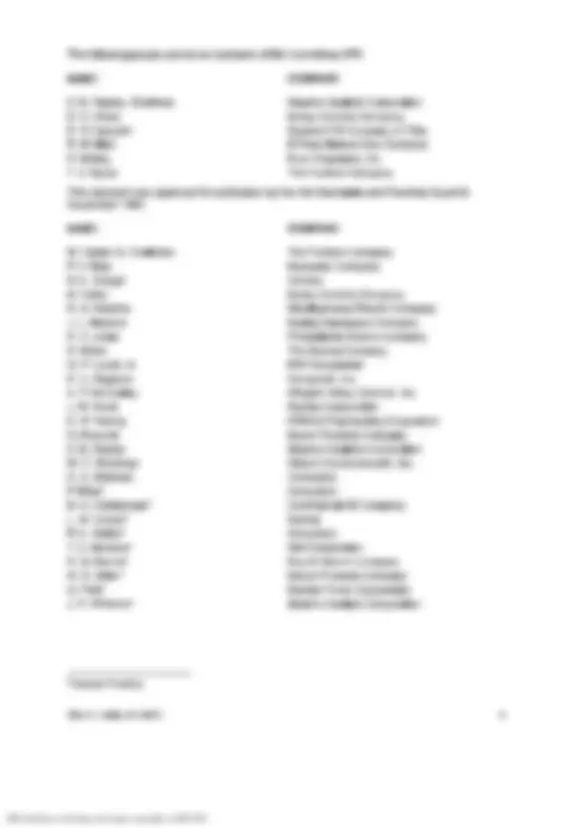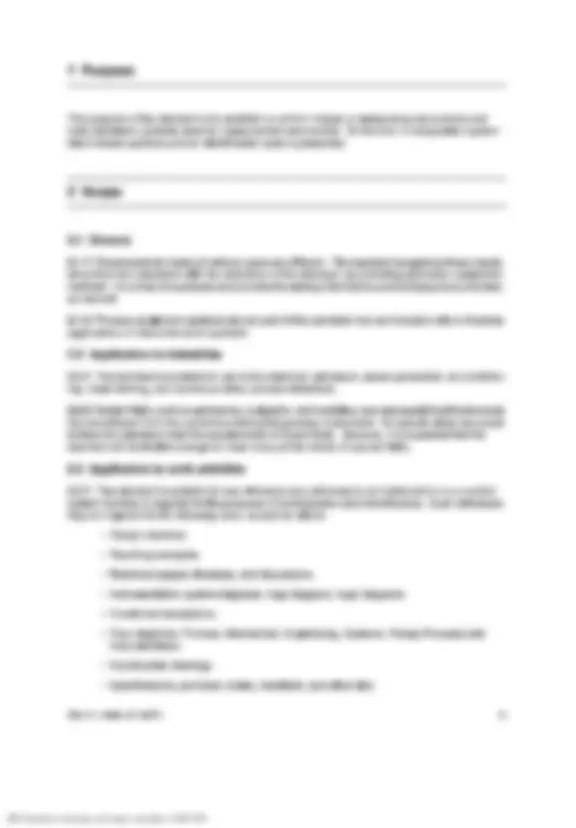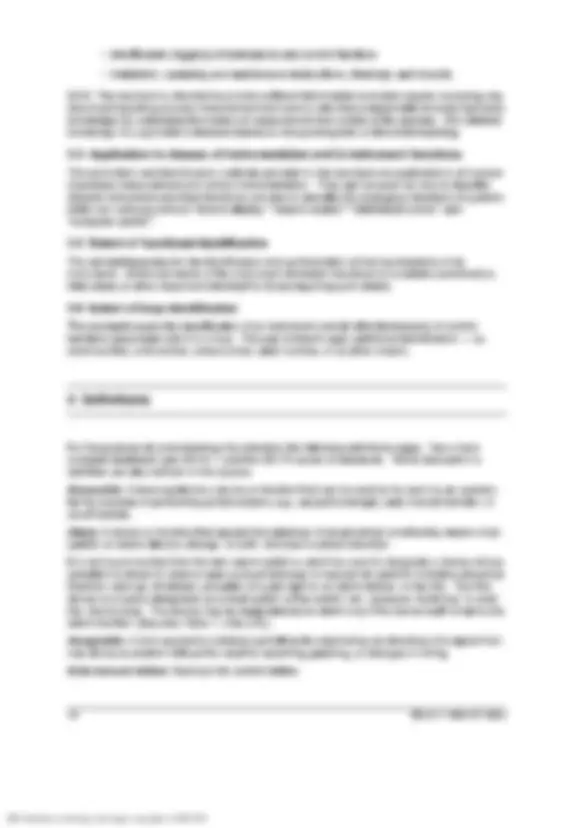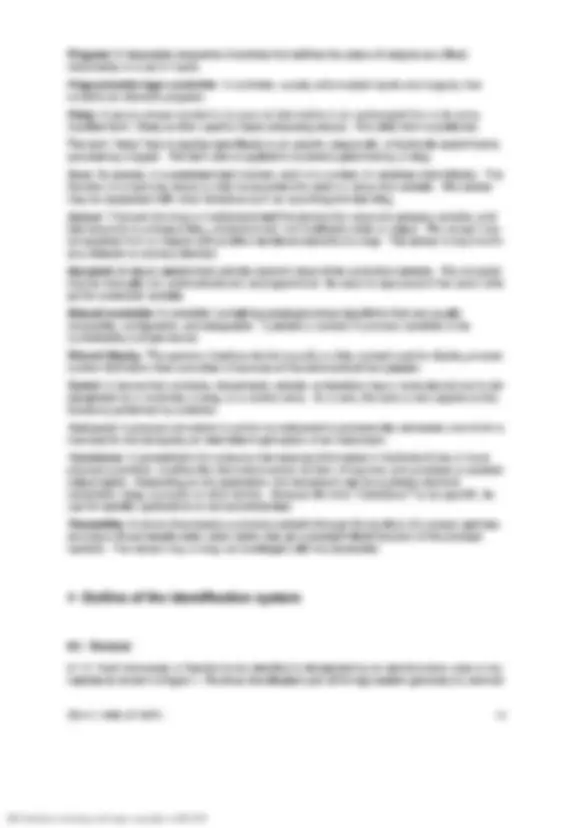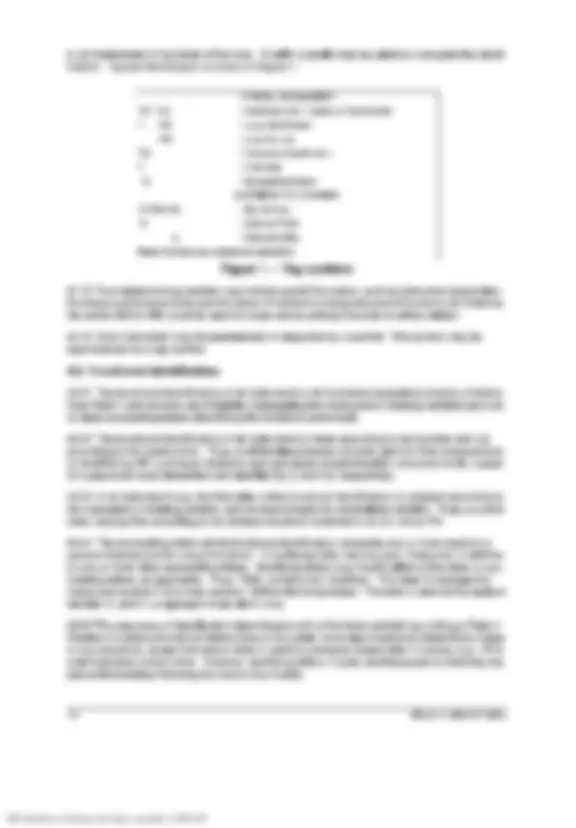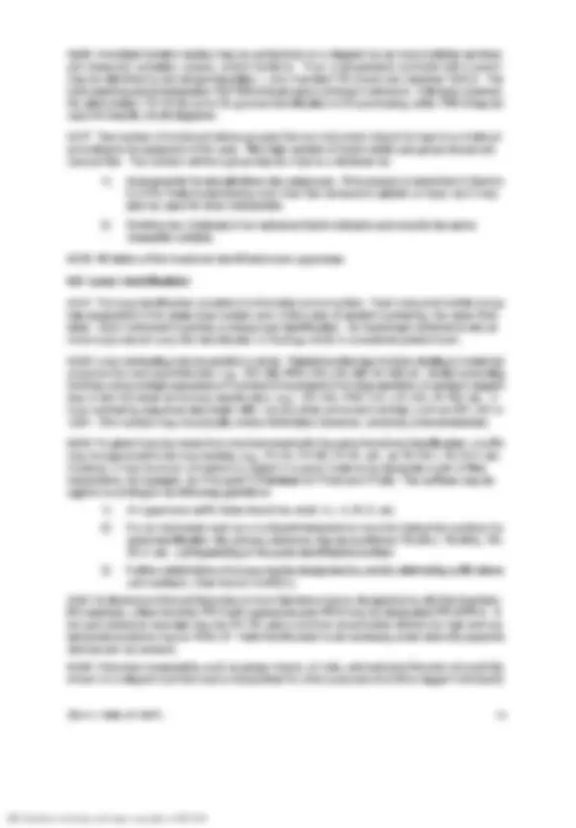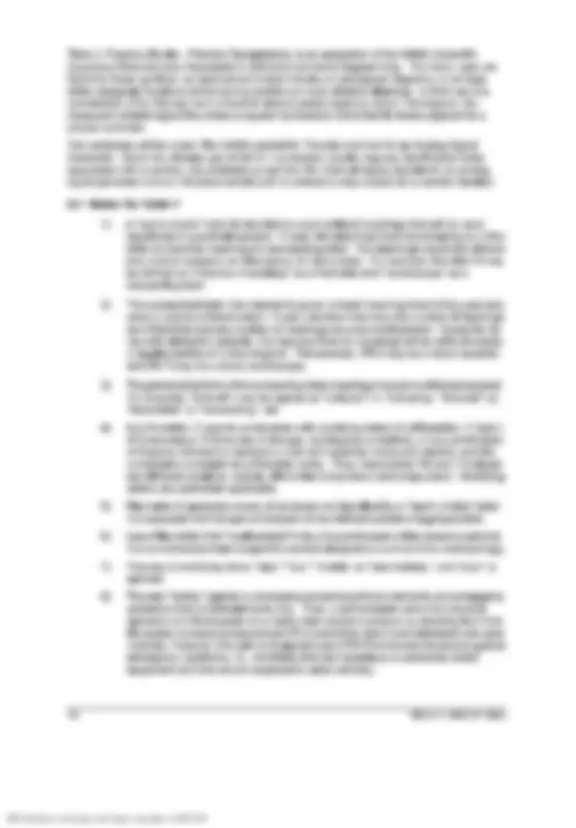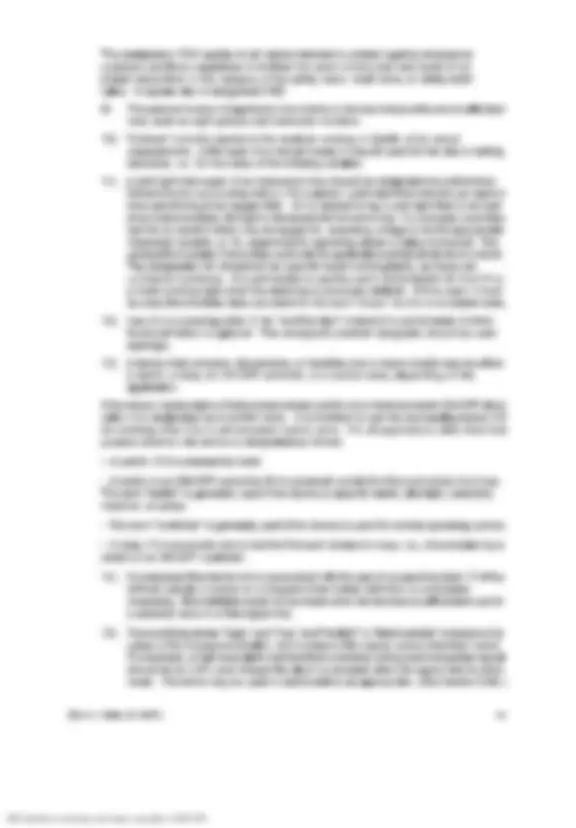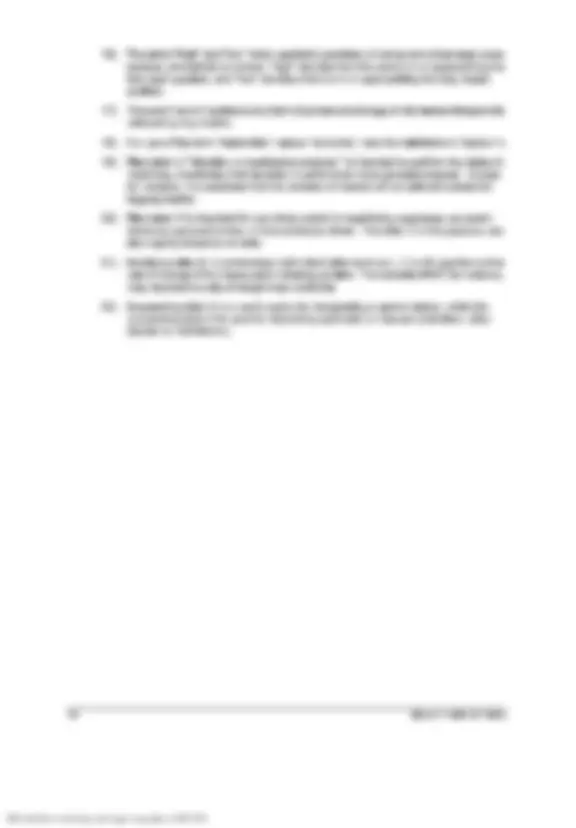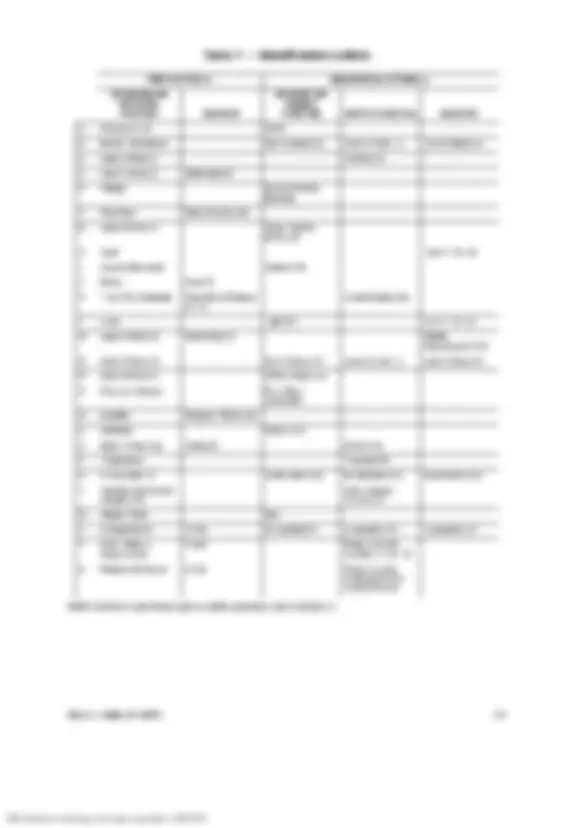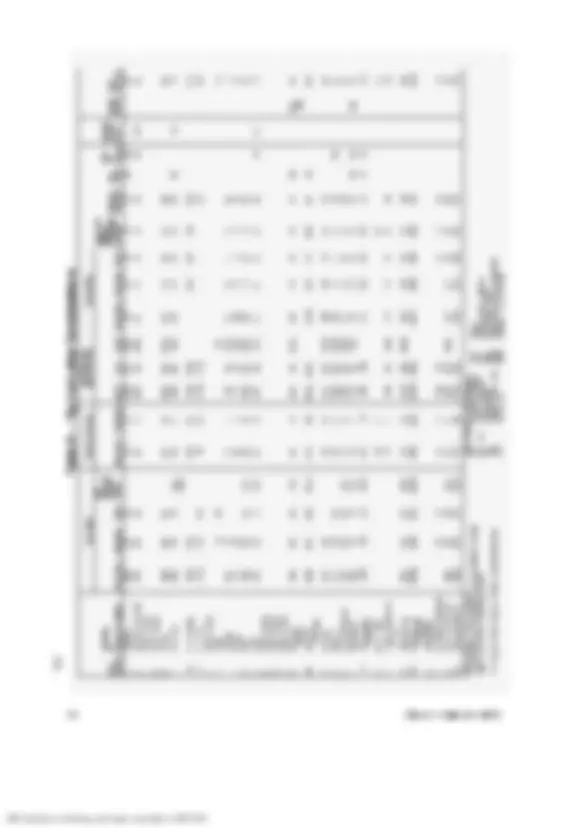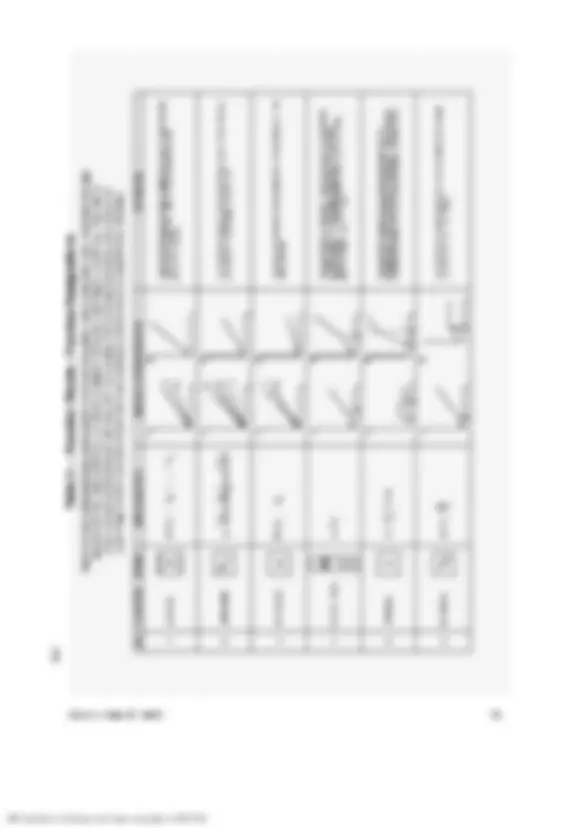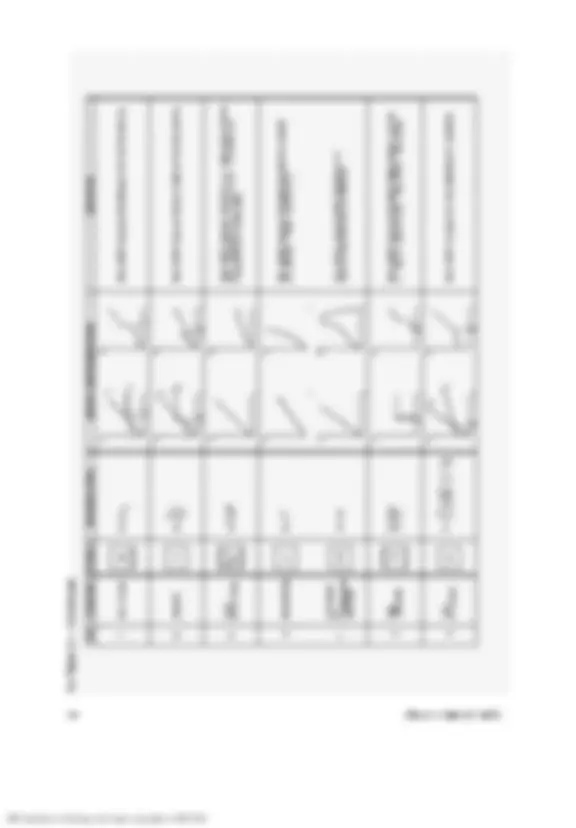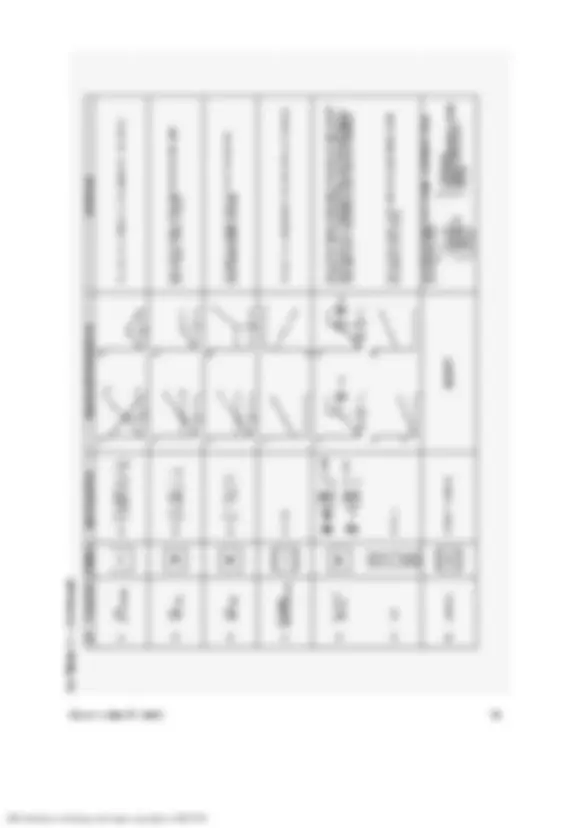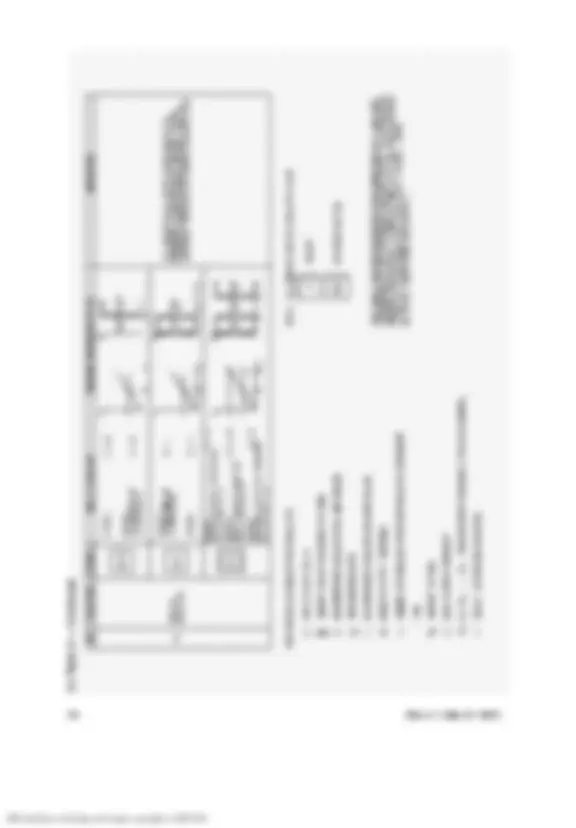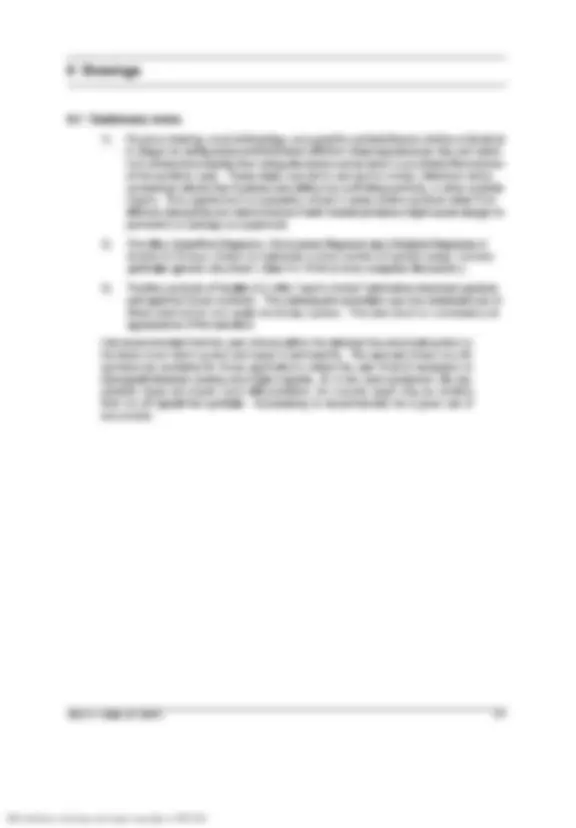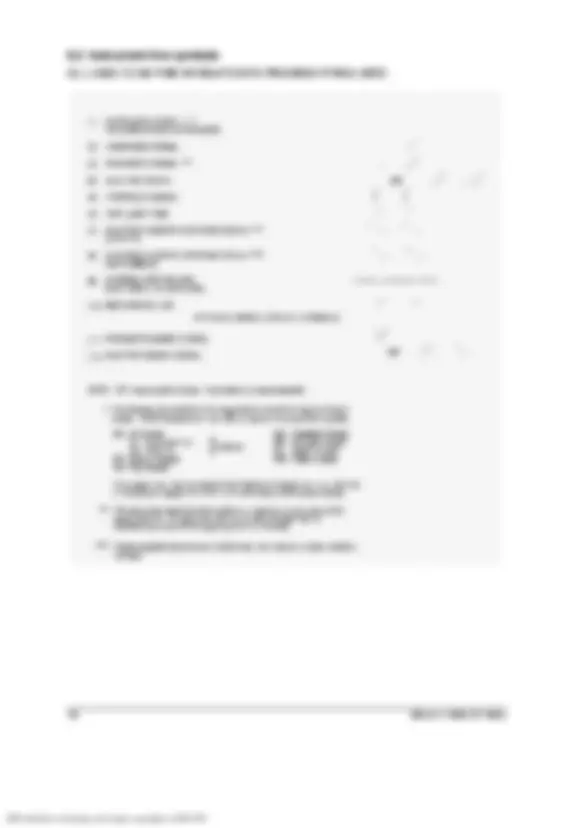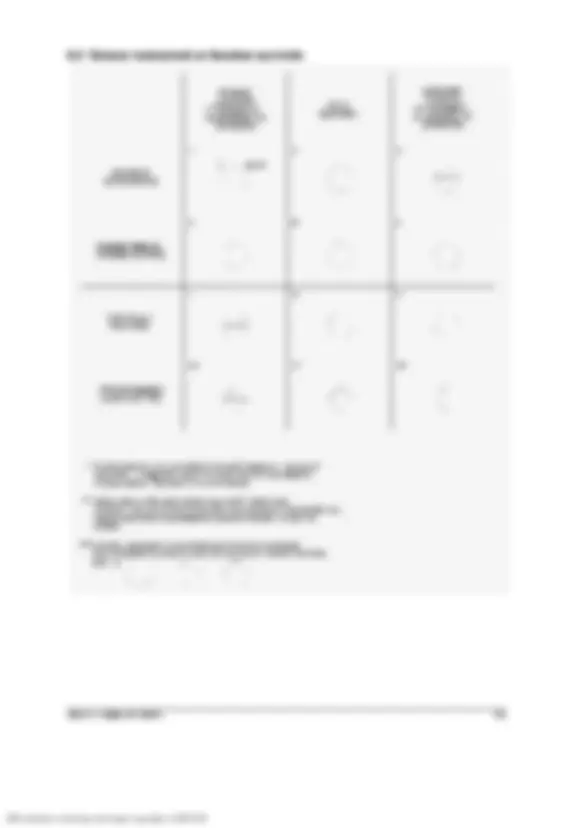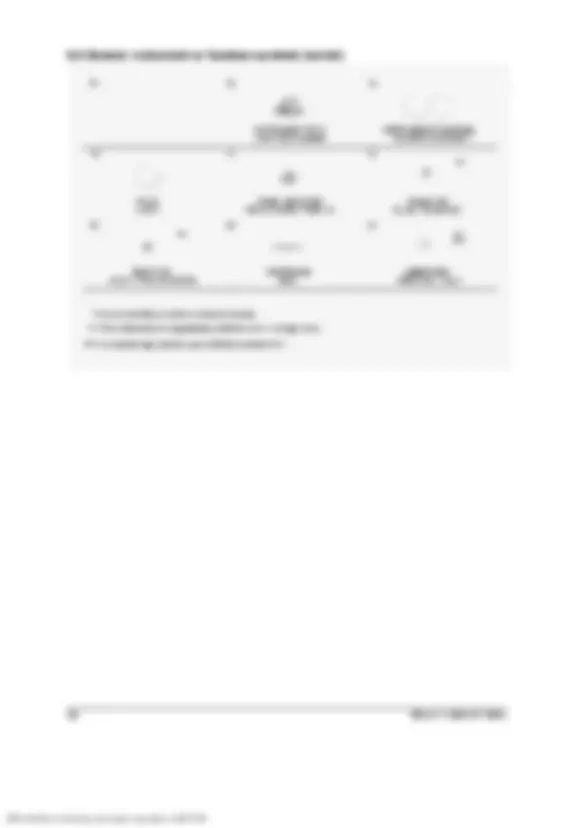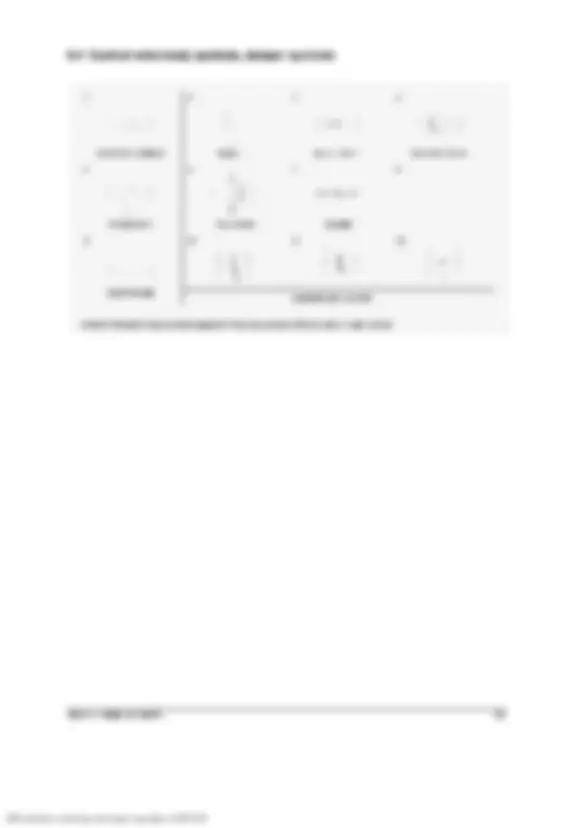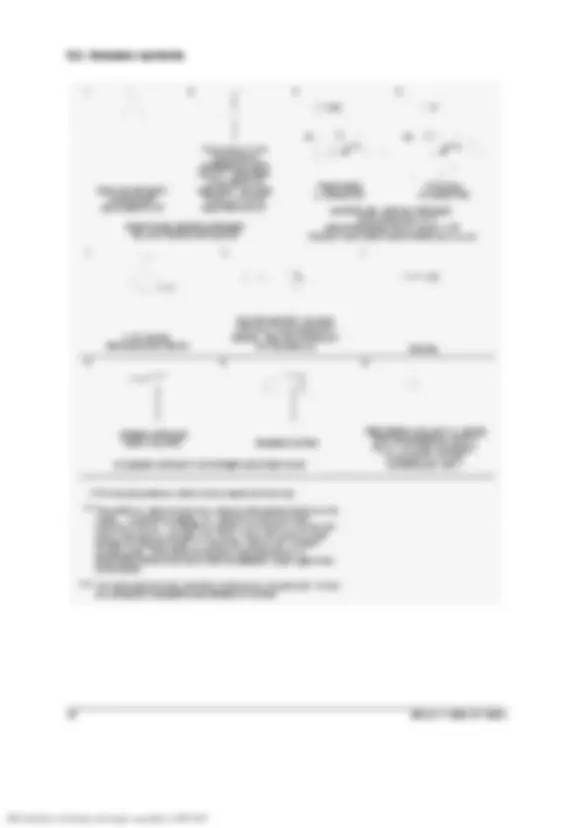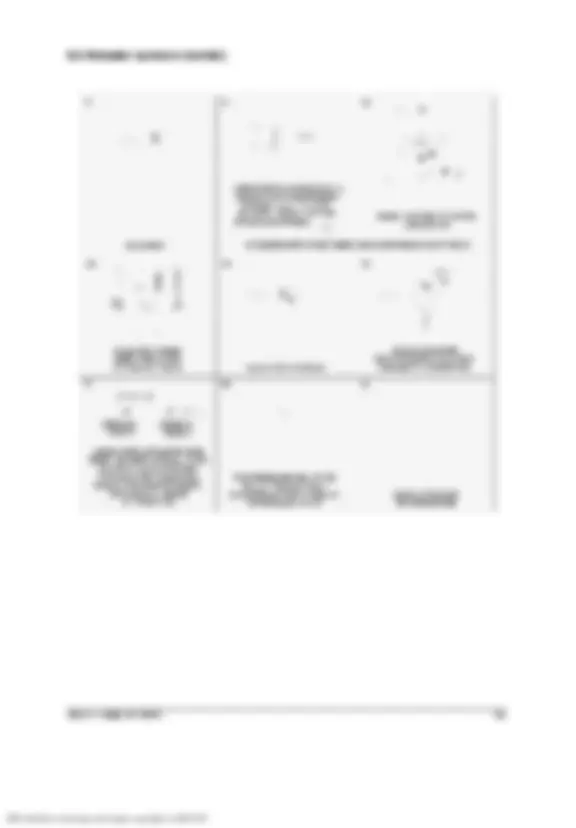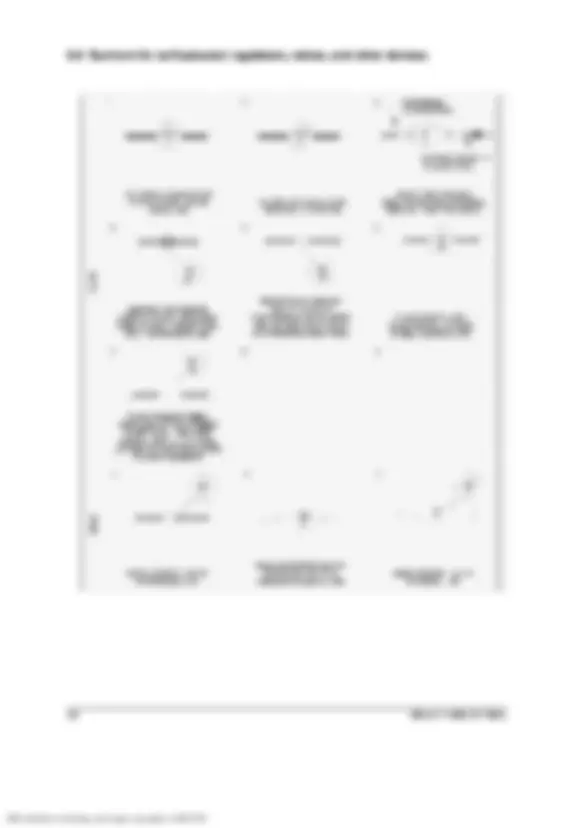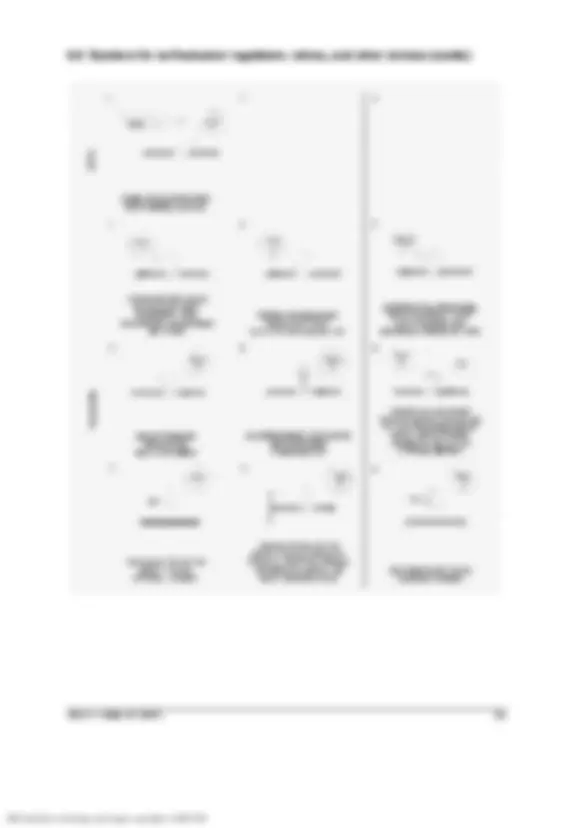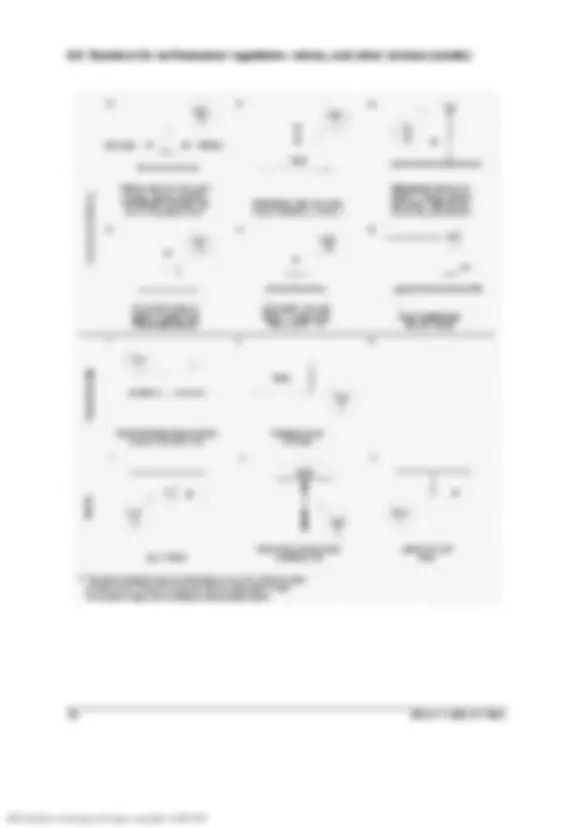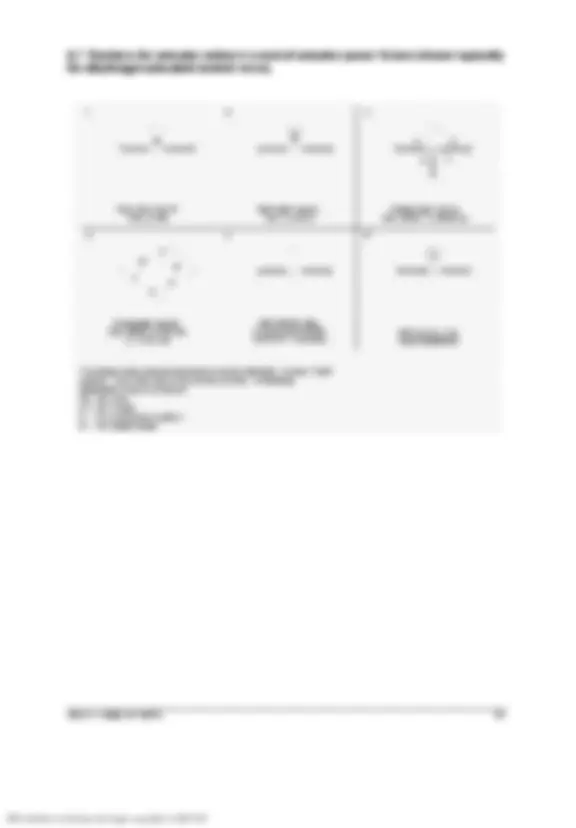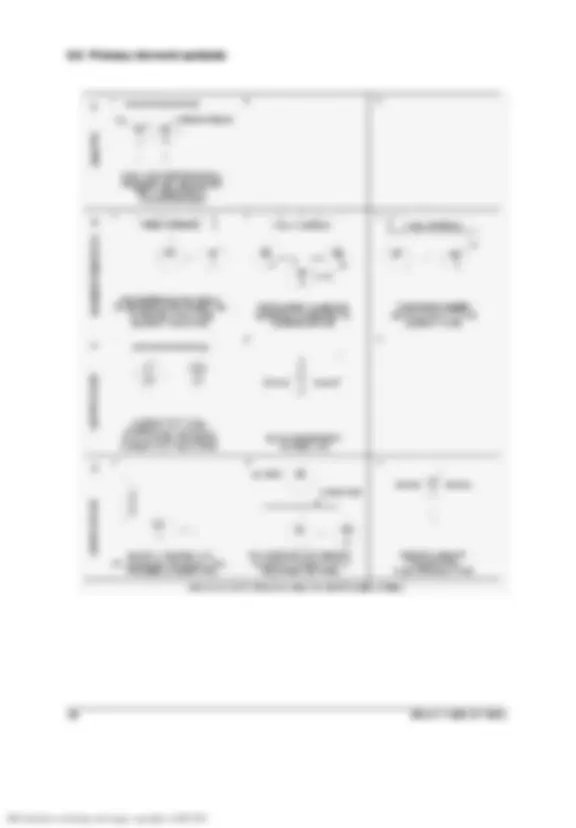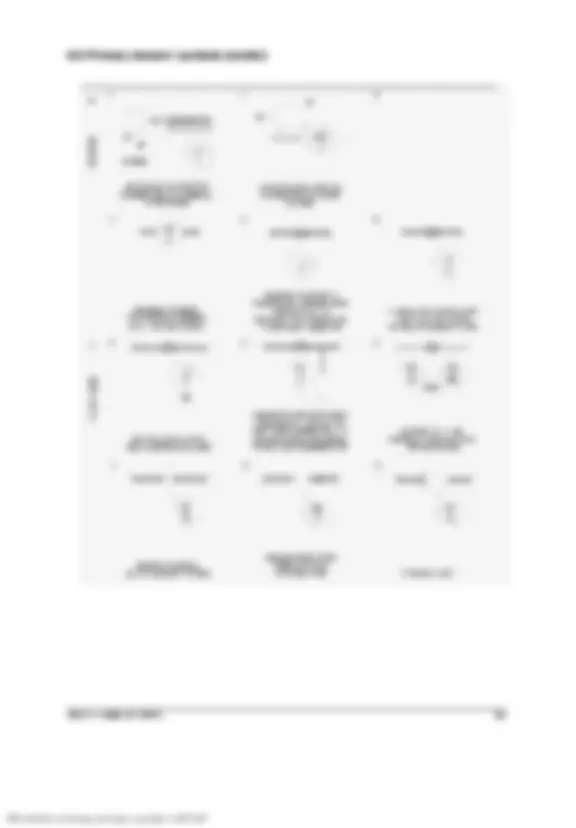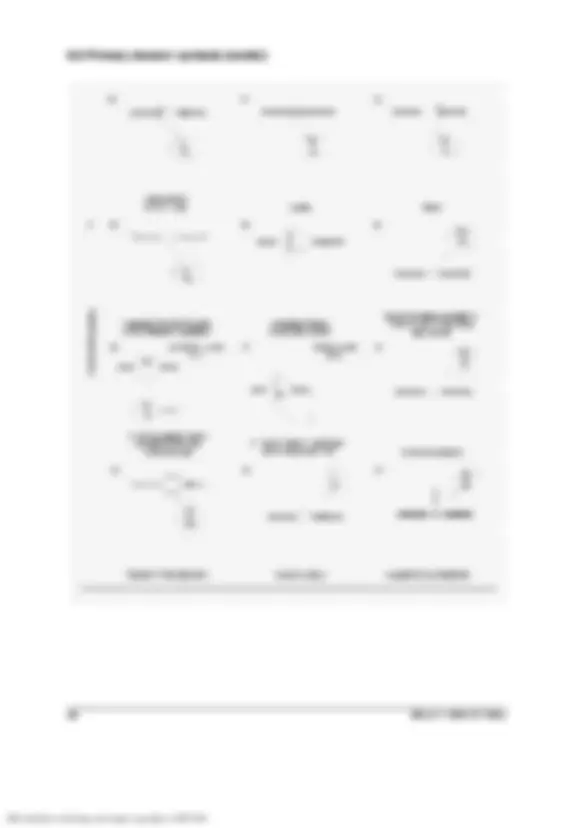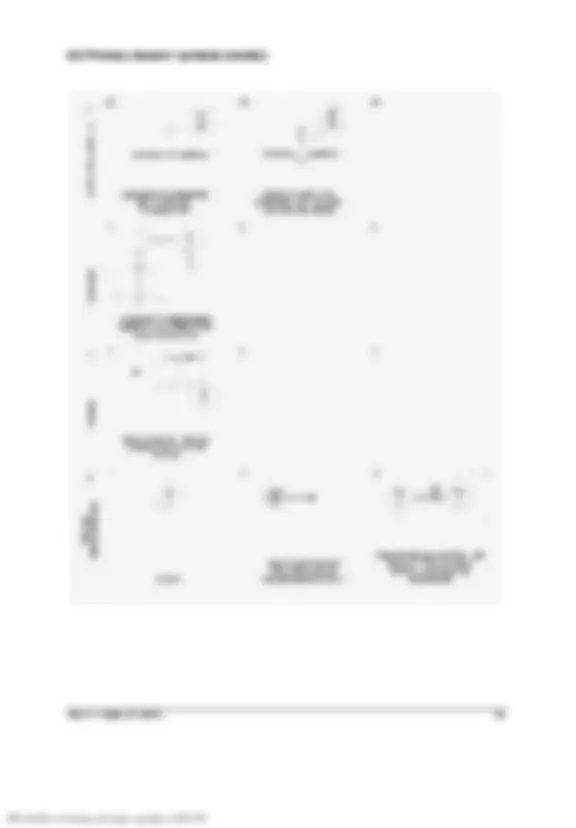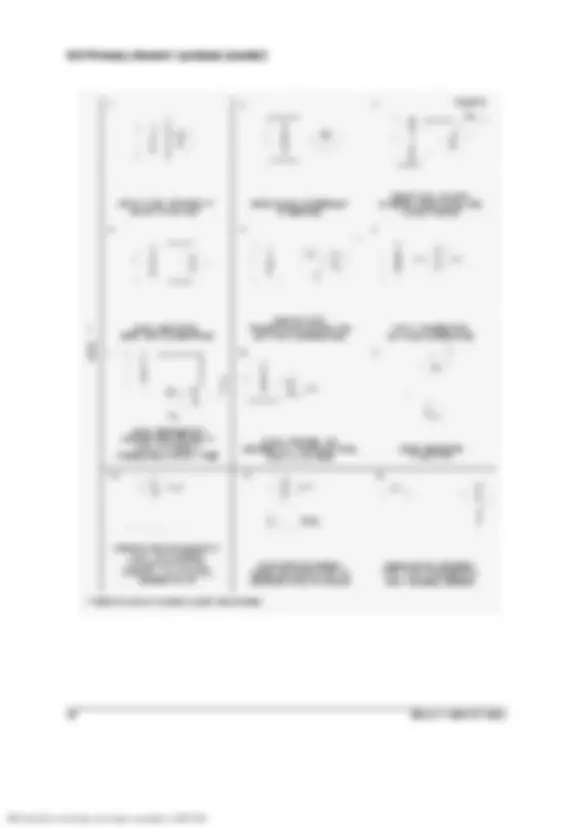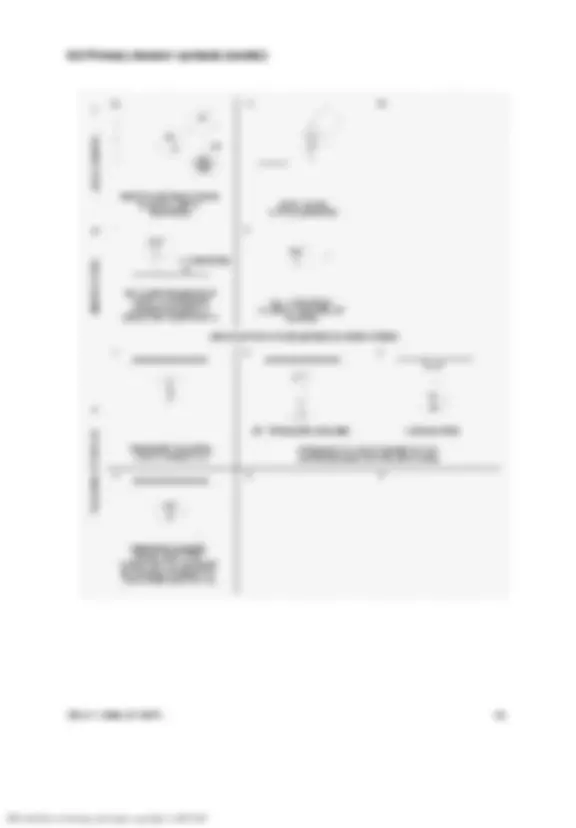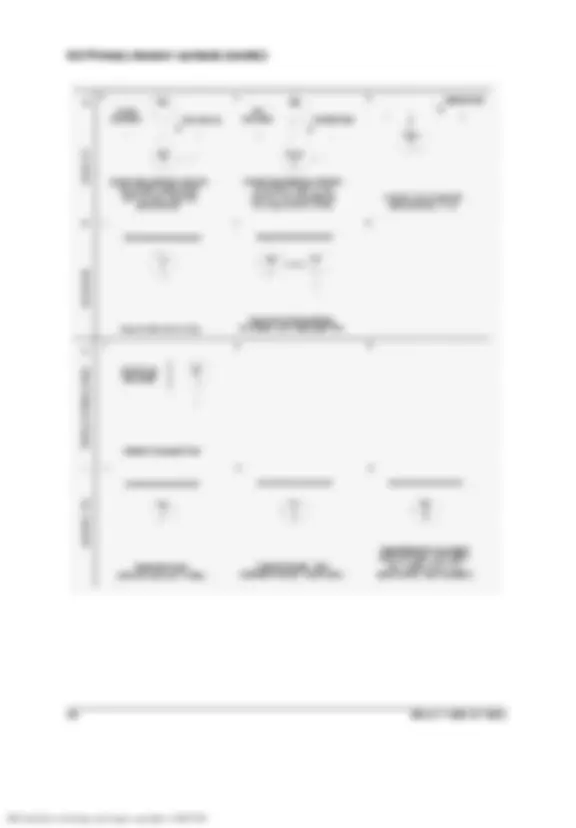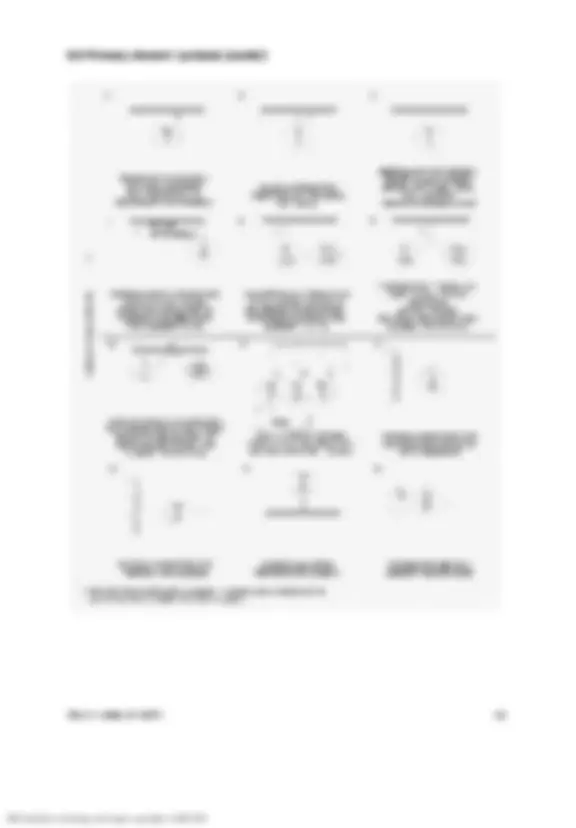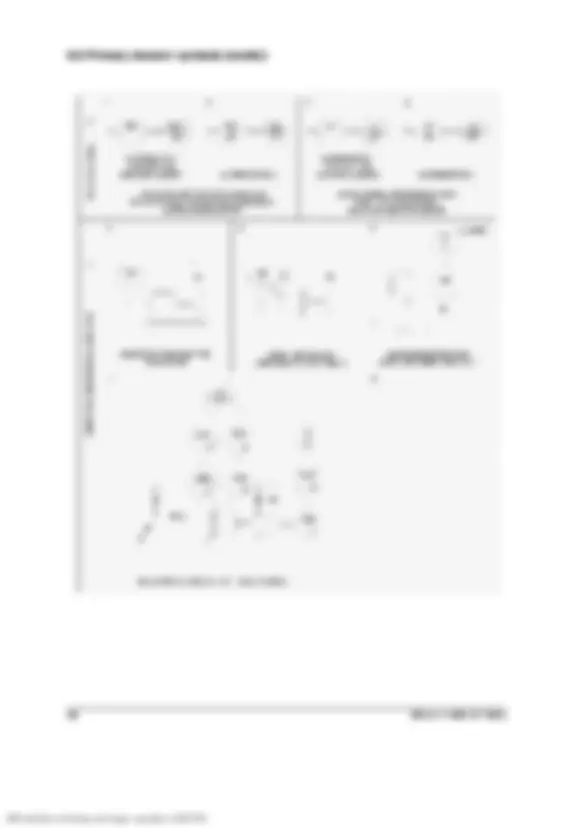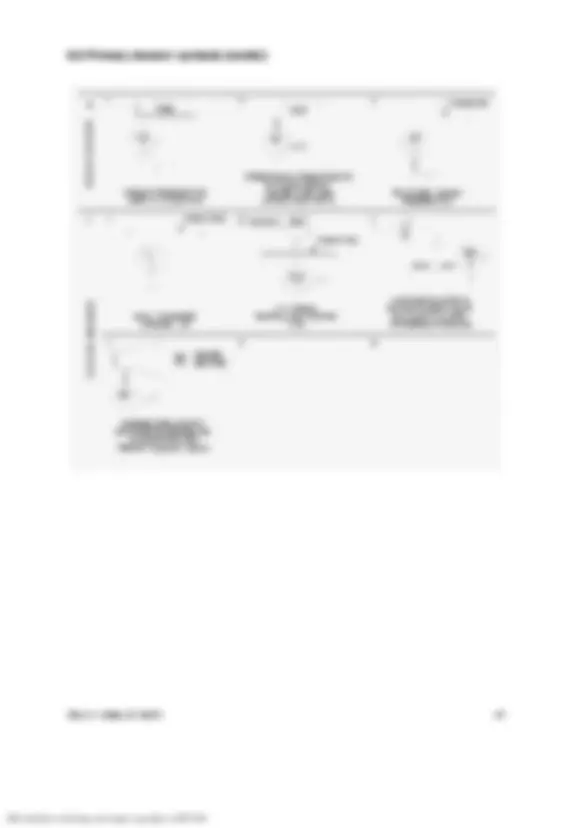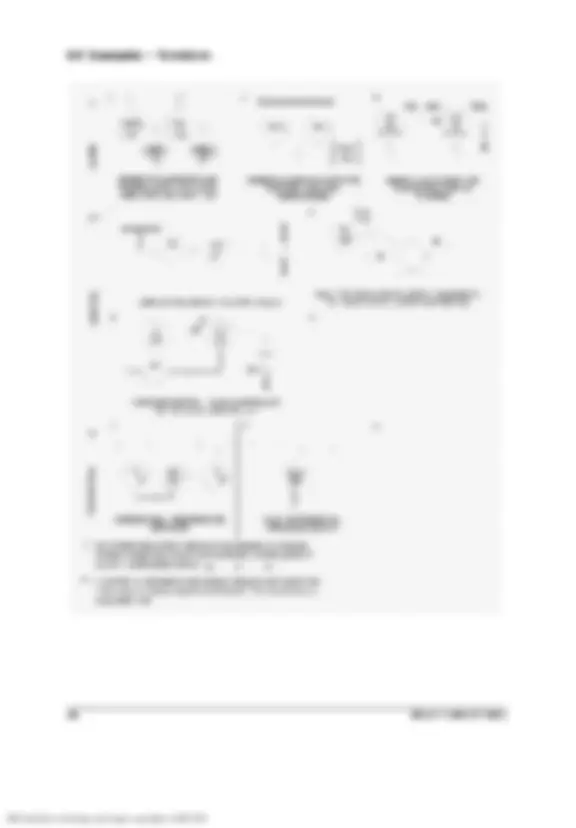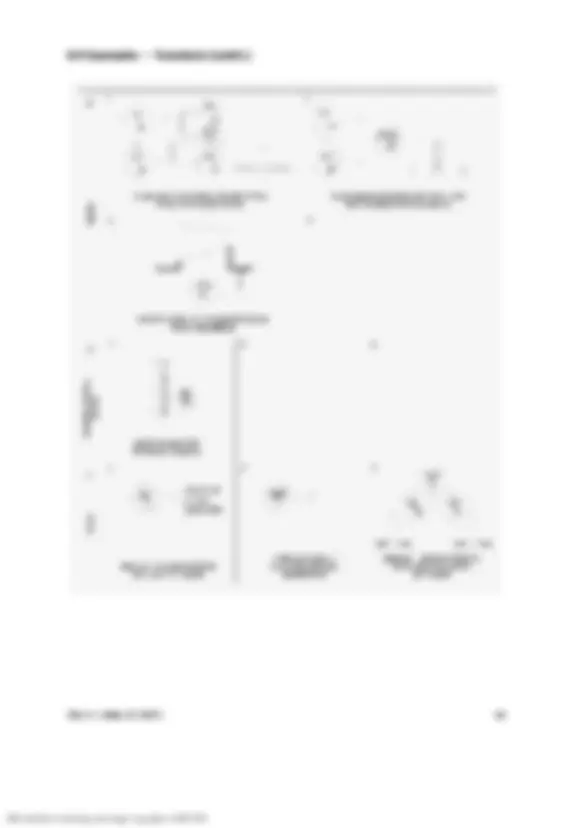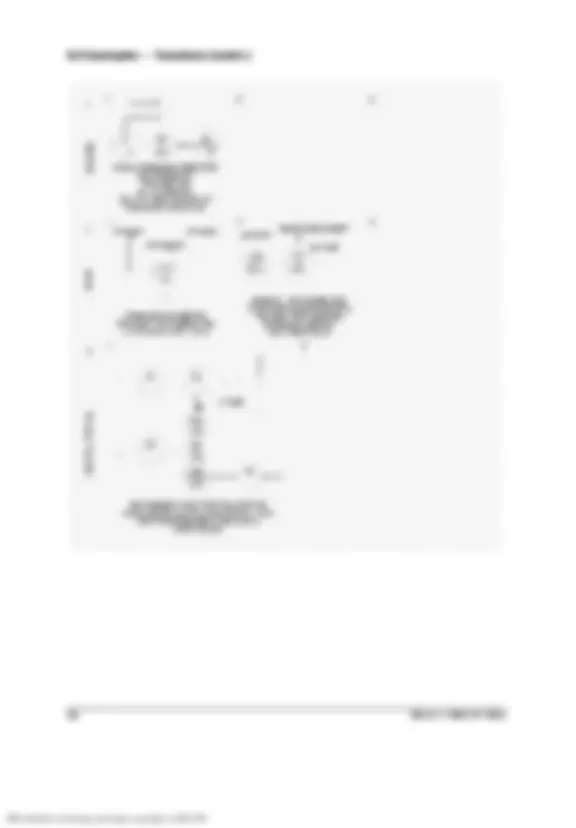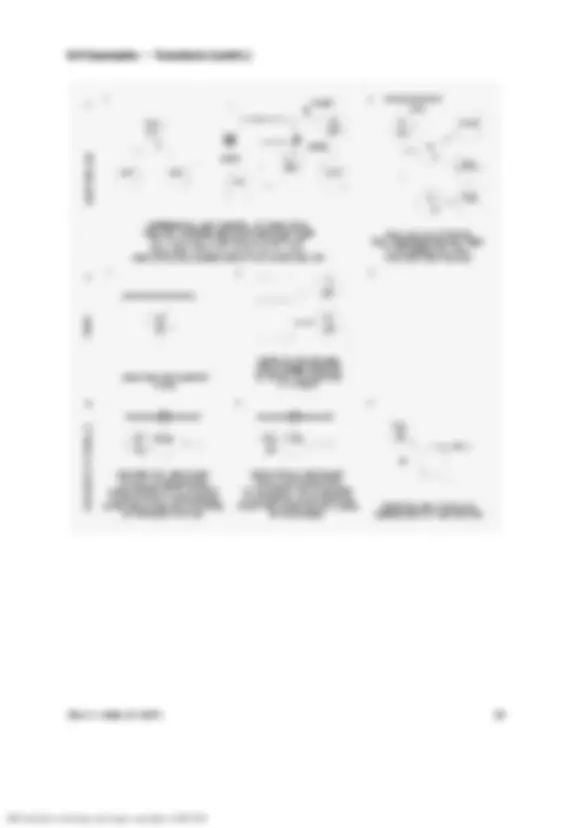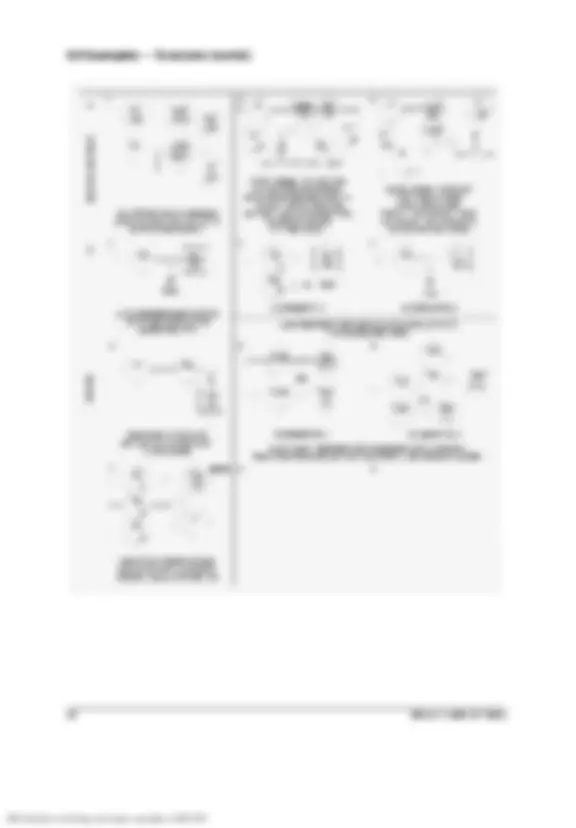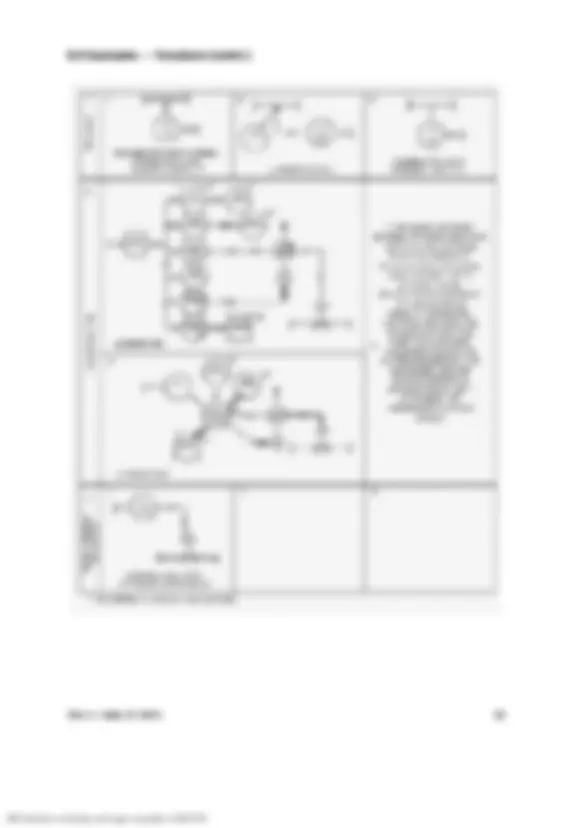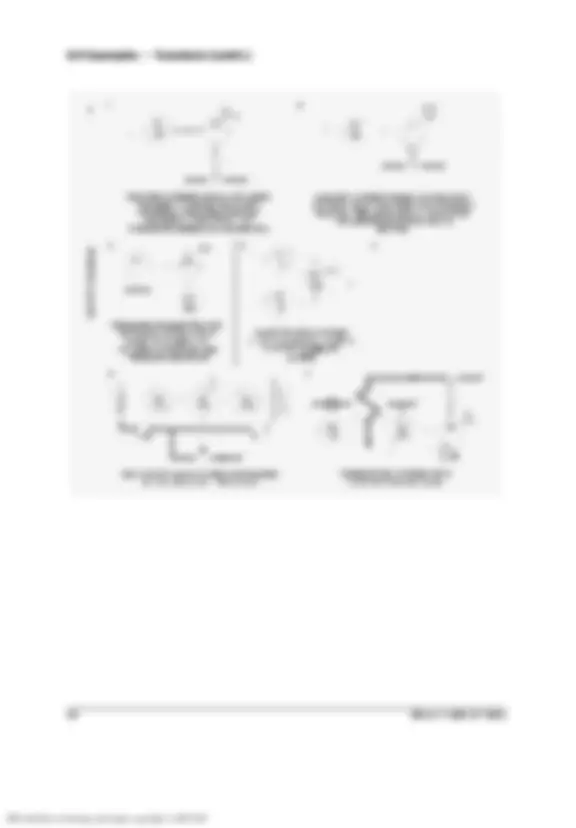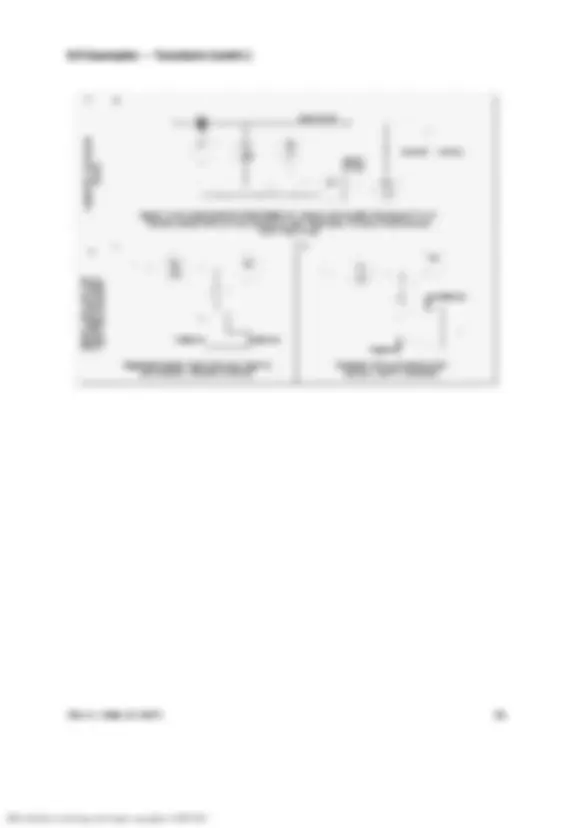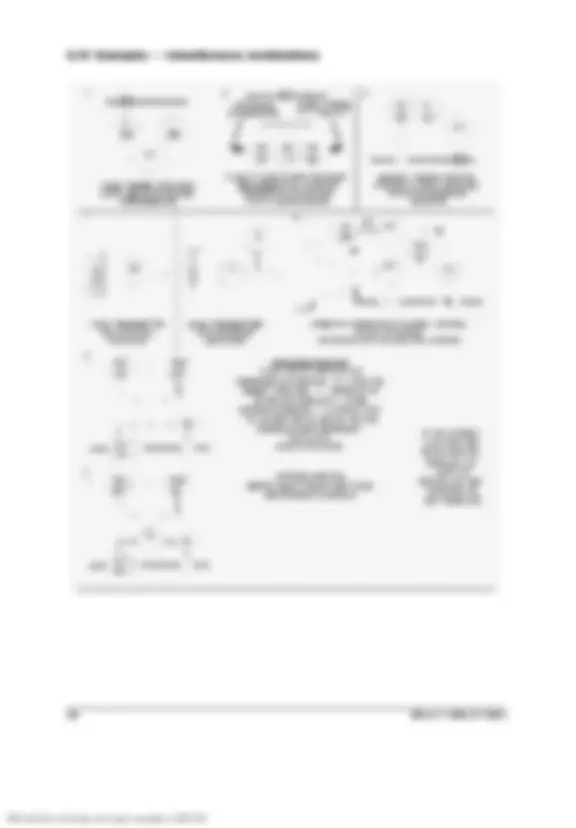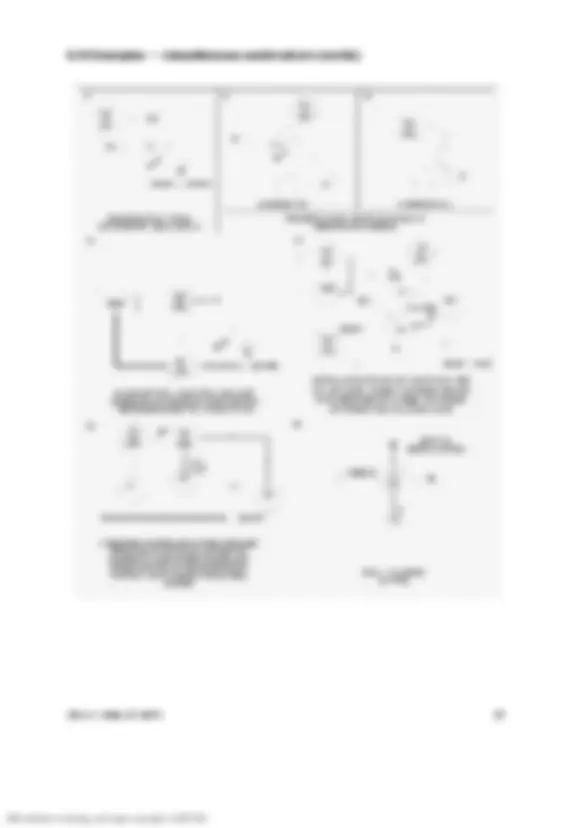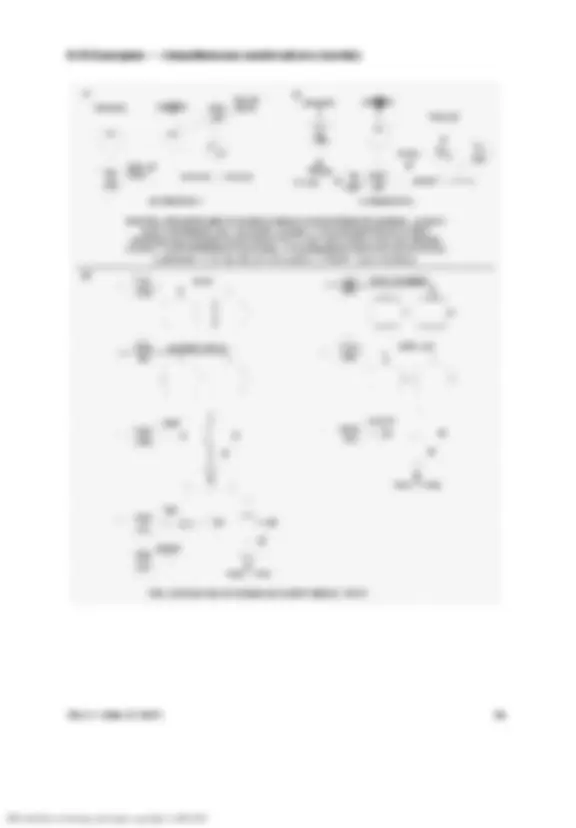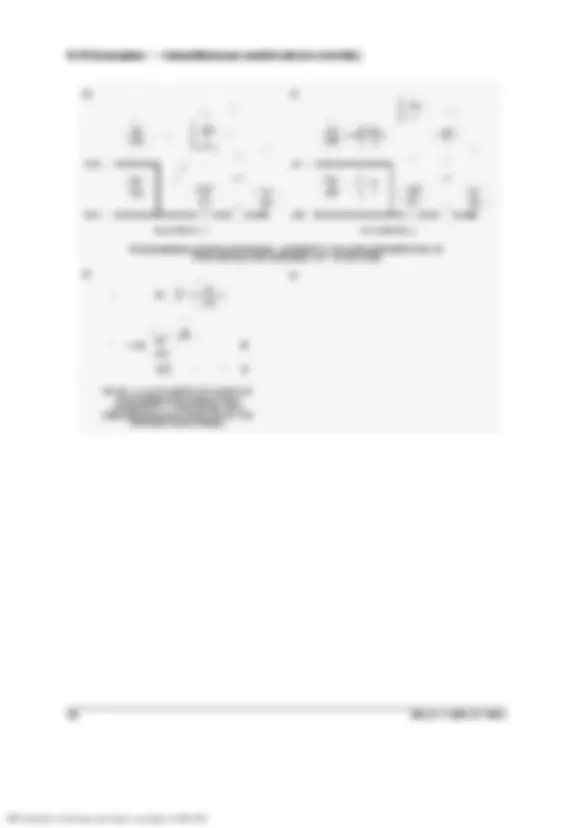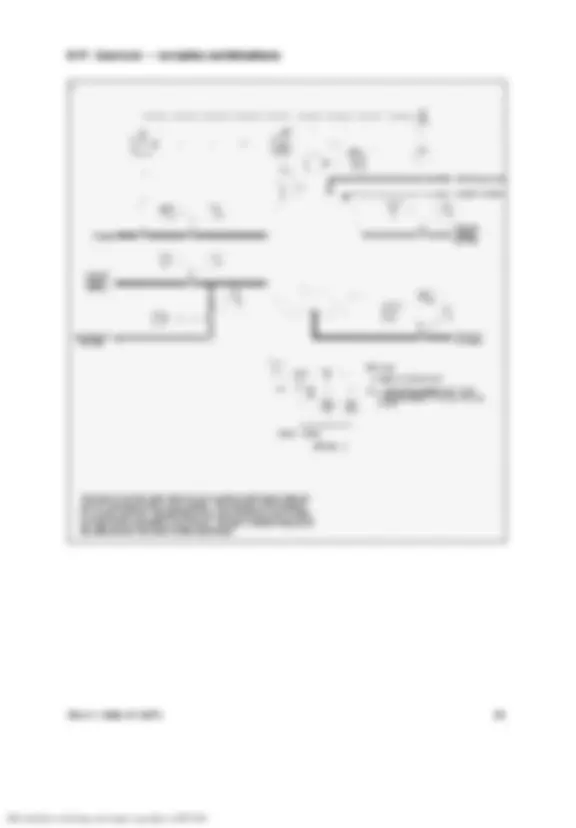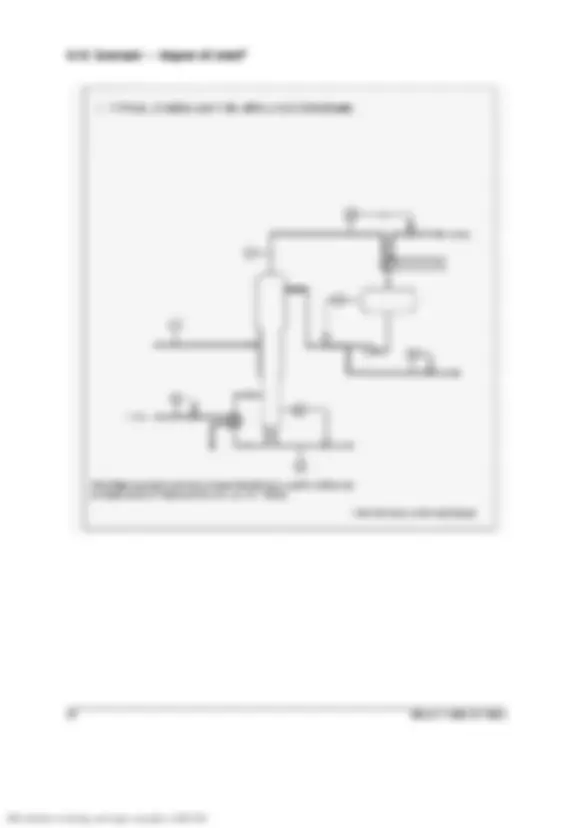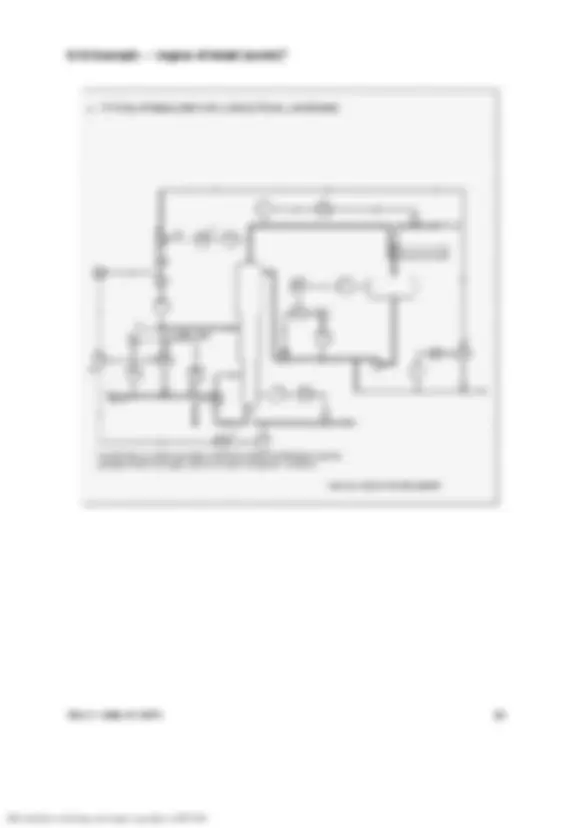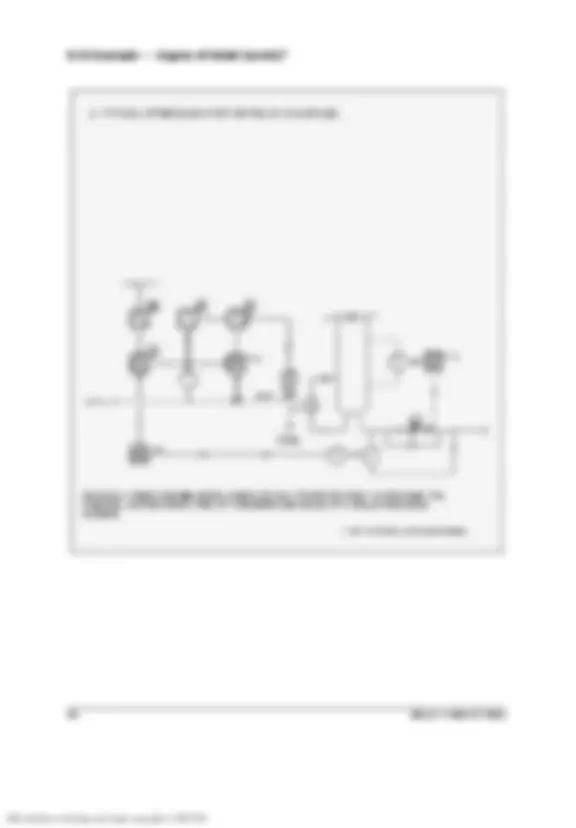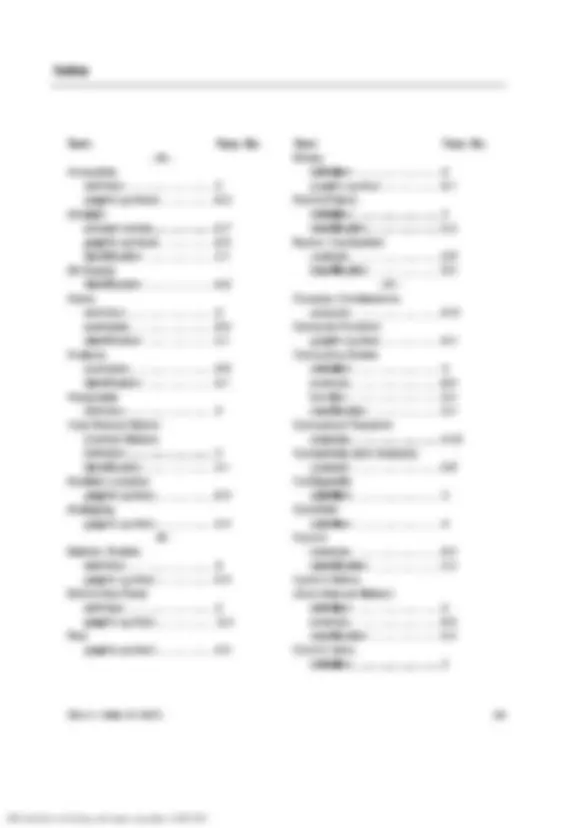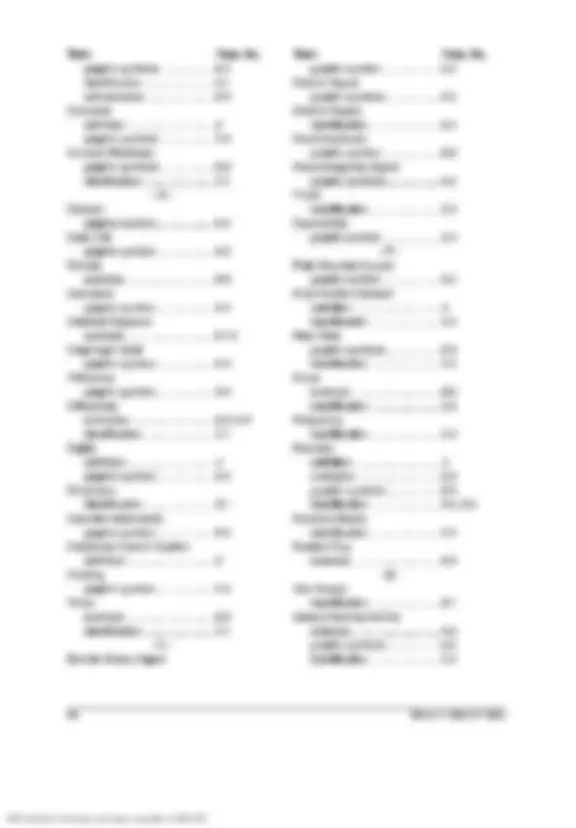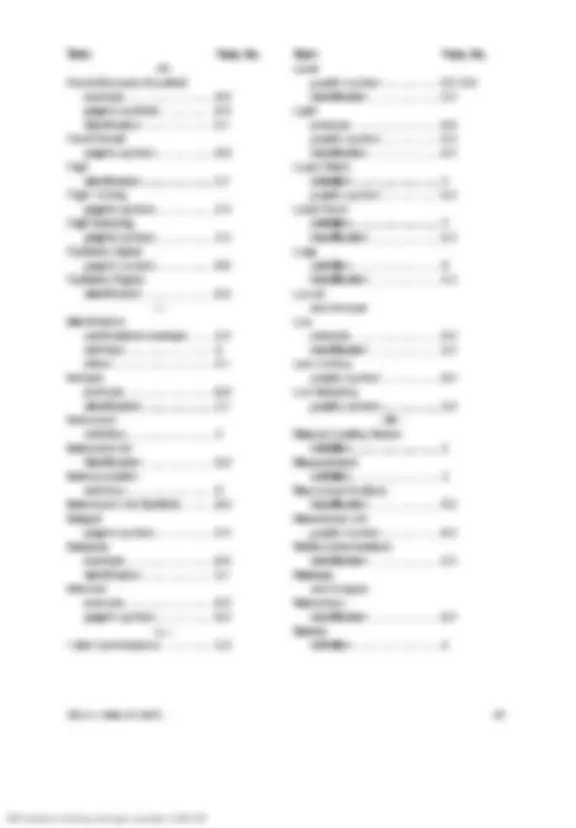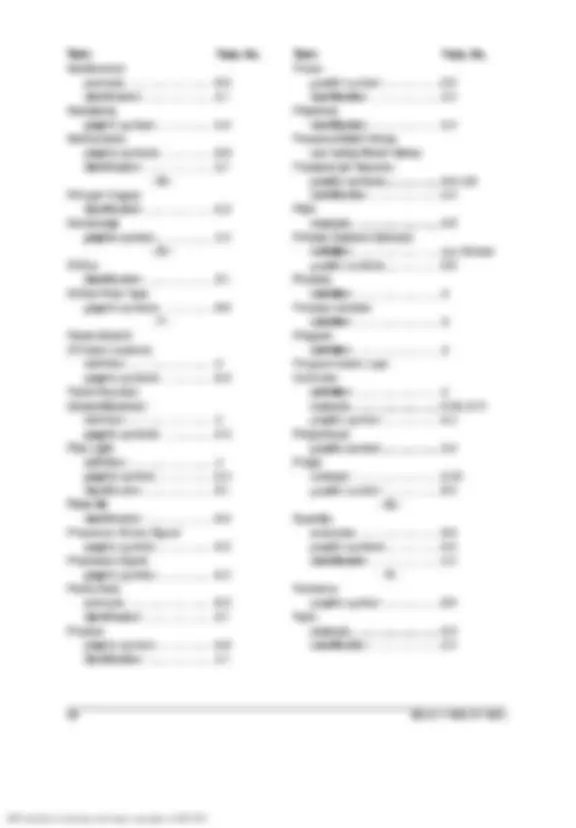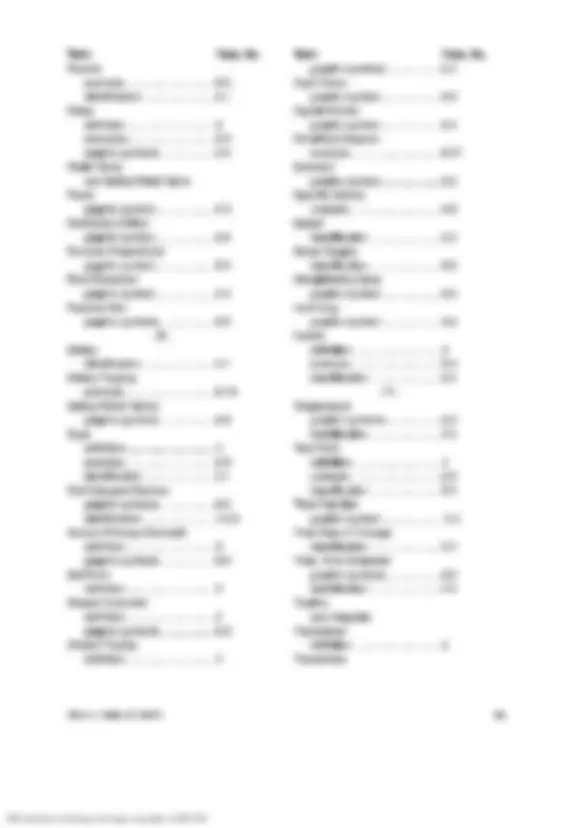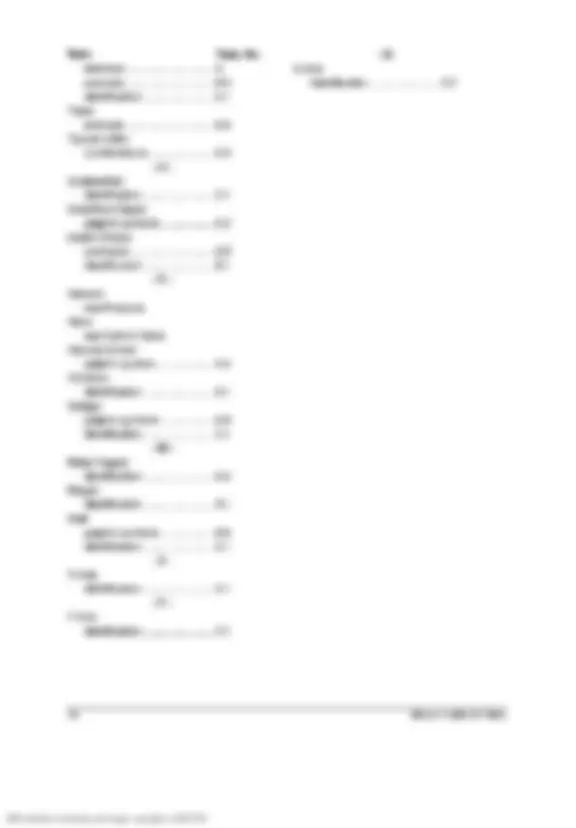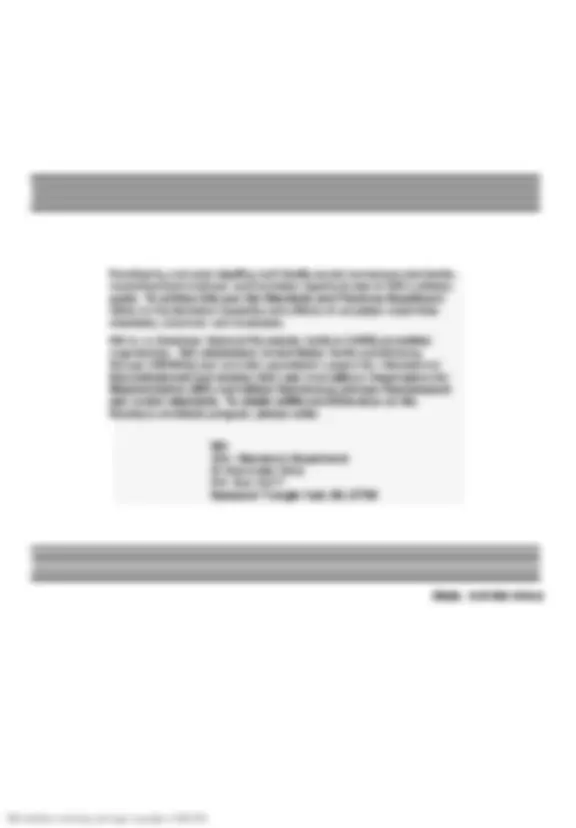Pré-visualização parcial do texto
Baixe ISA S5.1 Instrumentation Simbols and Identification e outras Notas de estudo em PDF para Cultura, somente na Docsity!
ISA-5.1-1984 (R1992) Formerly ANSIISA-5.1-1984 (R1992) NOTICE OF COPYRIGHT nay result in 1HS Intra/Spex technology and images copyright (c) IHS 2005 ISA:5.1-1984:(R1992); Instrumentation:Symbols and Identification: ISBN:0-87664.844-8: Copyright:& 1984-by-the: Instrument Society of. America: Al-rights:reserved: Printed inthe United States.ot America. No part of. this. publication.may. be. reproduced, stored Ín.a retrieval.system,.or transmitted/in any form: or-by any:means (electronic; mechanical, photocopying,: recording “or otherwise), without the:prior written:permission: of-the: publisher. ISA; 67 Alexander Drive P.O. Box 12277. Research: Triangle Park, North. Cardlina.27709 1HS Intra/Spex technology and images copyright (c) IHS 2005 In the past, the standard has been flexible enough to serve all of the uses just described. In the future, it must continue to do so. To this end, this revision offers symbols, identification, and definitions for concepts that were not previously described; for example, shared display/control, distributed control, and programmable control. Definitions were broadened to accommodate the fact that, although similar functions are being performed by the new control systems, these functions are frequently not related to a uniquely identifiable instrument; yet they still must be conceptualized and identified. The excellent SAMA (Scientific Apparatus Makers Association) method of functional diagramming was used to describe function blocks and function designators. To help the batch processing industries, where binary (on-off) symbolism is extremely useful, new binary line symbols were introduced and first-letter Y was selected to represent an initiating variable which could be categorized as an event, presence, or state. In general, breadth of application as opposed to narrowness has been emphasized. The ISA Standards Committee on Instrumentation Symbols and Identification operates within the ISA Standards and Practices Department, with William Calder III as vice president. The persons listed below served as members of or advisors to the SP5.1 committee. The SP5.1 committee is deeply appreciative of the work of previous SP5.1 committees and has tried to treat their work with the respect it deserves. In addition, this committee would like to acknowledge the work of the SP5.3 committee in developing ISA-5.3, "Graphic Symbols for Distributed Control/Shared Display Instrumentation, Logic and Computer Systems." The key elements of ISA-5.3 have been incorporated into ISA-5.1, and it is the Society's intent to withdraw ISA-5.3 after publication of this revision of ISA-5.1. The following people served as members of ISA Committee SP5.1, which prepared this standard: NAME COMPANY R. Mulley, Chairman Fluor Engineers, Inc. E. J. Blahut Blahut Enginesring, Inc. P.R. Boubel TXE, Inc. J.P. Carew Stone and Webster Engineering Corporation N. Dogra ANK Engineers J. E. Doyle Tweedcrest Limited C. R. Gross EXXON Company U.S.A. T. E. Hamler Owens Coming Fiberglass Corporation F. Hom Allied Chemical Company A. A. Iverson ARCO Chemical Company A. Langelier Polaroid Corporation W. E. Mapes Eastman Kodak Company TC. McAvinew Vertech Treatment Systems W.L. Mostia AMOCO Chemicals G.k. Pace Phelps Dodge Corporation G. Platt*, Past Chairman Bechtel Power Corporation A. W. Reeve AWR Controls (Canada) Ltd. S. Sankaran McDermott Engineering R.M. Shah Olin Chemicals Corporation D. G Tumbull Sandwell and Company, Limited R. von Brecht The M. W. Kellogg Company G. Wilbanks The Rust Engineering Company *Member Emeritus 1HS Intra/Spex technology and images copyright (c) IHS 2005 ISA-5.1-1984 (R 1992) The following people served as members of ISA Committee SP5: NAME D. E. Rapley, Chairman R.C. Greer D. G Kempfer R.H. Kind R. Mulley T. J. Myron COMPANY Steams Catalytic Corporation Bailey Controls Company Standard Oil Company of Ohio El Paso Natural Gas Company Fluor Engineers, Inc. The Foxboro Company This standard was approved for publication by the ISA Standards and Practices Board in September 1984. NAME W. Calder III, Chairman P.v. Bhat N.L. Conger B. Feikle H. S. Hopkins J.L. Howard R. T. Jones R. Keller O.P Lovett, Jr. E. €. Magison A. P. McCauley J. W. Mock E. M. Nesvig R. Prescott D. E. Rapley W. C. Weidman K. A. Whitman P. Bliss* B. A. Christensen? L.N. Combs* R.L. Galley* T.J. Harrison? R. G. Marvin* W. B. Miller* G. Platté J. R. Williams” *Director Emeritus COMPANY The Foxboro Company Monsanto Company Conoco Bailey Controls Company Westinghouse Electric Company Boeing Aerospace Company Philadelphia Electric Company The Boeing Company ISIS Corporation Honeywell, Inc. Chagrin Valley Controls, Inc. Bechtel Corporation ERDCO Engineering Corporation Moore Products Company Steams Catalytic Corporation Gilbert Commonwealth, Inc. Consultant Consultant Contintental Oil Company Retired Consultant IBM Corporation Roy G. Marvin Company Moore Products Company Bechtel Power Corporation Stearns Catalytic Corporation ISA-5.1-1984 (R 1992) 1HS Intra/Spex technology and images copyright (c) IHS 2005 Contents Section Title Section Number 1 Purpose ........ nn rerrereremoerena nene eae rerenserera acena anne rama e renan ae rerara arena anne 9 2º Scope ii rerereremetemetemeneronenere rare reresam aan some e me anan ane ne nana senam eram rosana nana am as 9 24 General 22 Application to industries ... 23 Application to work activi 24 Application to classes of instrumen 25 Extent of functional identification .................. ni ececereeeereeertnerea 10 26 Extent of loop identification... cereteeeereeeereeeereeeeerenees 10 3 Definitions .......... ee cometeerereese eee temma semana mese reee ren senemesameeranserennesennesa 10 4 Outline ofthe identification system ................. nn cerrereerereeseremsemenssammerareeseneesa 13 41 General 42 Functional identification ..................nl ns esses ereererererenereneares 14 43 Loop identification... sisters ceesererererenerenereneares 15 44 Symbols... nene ceneeeaeeee aerea mean reatar 16 5 Tables meme reerereemereeee emma rea rearereare rena e renan ame eae rea e rea e res rmma meme ame rna senta 17 6 Drawings ..sssesiuesetamserasseserrsese ramo etaa temas eae raRA ARARAS RR RR RSA RARA 27 841 Cautionary Notes ......es temer ira rear ane ae rrar aereas tenra a ninar 27 82 Instrument line symbols ............ re ceesererererereerr era rireramereemreereerararaaraanaas 28 83 General instrument or function symbols ................. o 64 Control valve body symbols, damper symbols 6.5 Actuator symbols 6.6 Symbols for self-actuated regulators, valves, and other devices .................... 3 6.7 Symbols for actuator action in event of actuator power failure. ....................... 37 6.8 Primary element symbols ..................n rise ceeeeeeerererereanerenenes 38 8.9 Examples — functions 6.10 Examples — miscellaneous combinations ..............i 56 6.11 | Example — complex combinations 6.12 Example — degree of detail ....... ISA-5.1-1984 (R 1992) 1HS Intra/Spex technology and images copyright (c) IHS 2005 1HS Intra/Spex technology and images copyright (c) IHS 2005 * Identification (tagging) of instruments and control functions * Installation, operating and maintenance instructions, drawings, and records 2.3.2 The standard is intended to provide sufficient information to enable anyone reviewing any document depicting process measurement and control (who has a reasonable amount of process knowledge) to understand the means of measurement and control of the process. The detailed knowledge of a specialist in instrumentation is not a prereguisite to this understanding. 2.4 Application to classes of instrumentation and to instrument functions The symbolism and identification methods provided in this standard are applicable to all classes of process measurement and control instrumentation. They can be used not only to describe discrete instruments and their functions, but also to describe the analogous functions of systems which are variously termed "shared display," "shared control," “distributed control," and "computer control." 2.5 Extent of functional identification The standard provides for the identification and symbolization of the key functions of an instrument. Additional details of the instrument are better described in a suitable specification, data sheet, or other document intended for those requiring such details. 2.6 Extent of loop identification The standard covers the identification of an instrument and all other instruments or control functions associated with itin a loop. The user is free to apply additional identification — by serial number, unit number, area number, plant number, or by other means. 3 Definitions For the purpose of understanding this standard, the following definitions apply. For a more complete treatment, see ISA-51.1 and the ISA-75 series of standards. Terms italicized in a definition are also defined in this section. Accessible: A term applied to a device or function that can be used or be seen by an operator for the purpose of performing control actions, e.g., sef point changes, auto-manual transfer, or on-off actions. Alarm A device or function that signals the existence of an abnormal condition by means of an audible or visible discrete change, or both, intended to attract attention. It is not recommended that the term atarm switch or alarm be used to designate a device whose operation is simply to close or open a circuit that may or may not be used for normal or abnormal interlock, startup, shutdown, actuation of a pilot fight or an a/arm device, or the like. The first device is properly designated as a level switch, a flow switch, efc., because "switching" is what the device does. The device may be designated as an alarm only if the device itself contains the alarm function. [See also Table 1, note (13).] Assignable: A term applied to a feature permitting the channeling (or directing) of a signal from one device to another without the need for switching, patching, or changes in wiring. Auto-manual station: Synonym for contro! station. 10 ISA-5.1-1984 (R 1992) 1HS Intra/Spex technology and images copyright (c) IHS 2005 Balloon: Synonym for bubble. Behind the panel: A term applied to a location that is within an area that contains (1) the instrument panel, (2) its associated rack-mounted hardware, or (3) is enclosed within the panel. Behind the pane! devices are not accessible for the operator's normal use, and are not designated as local or front-of-panel-mounted. In a very broad sense, "behind the panel" is equivalent to "not normally accessible to the operator.” Binary: A term applied to a signal or device that has only two discrete positions or states. When used in its simplest form, as in "binary signal" (as opposed to "analog signal"), the term denotes an “on-off" or "high-low" state, £e., one which does not represent continuously varying quantities. Board: Synonym for panel. Bubble: The circular symbol used to denote and identify the purpose of an instrument or function. It may contain a tag number. Synonym for balloon. Computing device: A device or function that performs one or more calculations or logic operations, or both, and transmits one or more resultant output signals. A computing device is sometimes called a computing relay. Configurabie: A term applied to a device or system whose functional characteristics can be selected or rearranged through programming or other methods. The concept excludes rewiring as a means of altering the configuration. Controller: A device having an output that varies to regulate a controlled variable in a specified manner. A controller may be a self-contained analog or digital instrument, or it may be the equivalent of such an instrument in a shared-control system. An automatic controller varies its output automatically in response to a direct or indirect input of a measured process variable. A manual controller is a manual loading station, and its output is not dependent on a measured process variable but can be varied only by manual adjustment. A controller may be integral with other functional elements of a control /oop. Control station: A manual loading station that also provides switching between manual and automatic control modes of a control /oop. Itis also known as an auto-manual! station. In addition, the operator interface of a distributed contro! system may be regarded as a contro! station. Control valve: A device, other than a common, hand-actuated ON-OFF valve or self-actuated check valve, that directly manipulates the flow of one or more fluid process streams. ltis expected that use of the designation "hand contro! valve" will be limited to hand-actuated valves that (1) are used for process throttling, or (2) require identification as an instrument. Converter. A device that receives information in one form of an instrument signal and transmits an output signal in another form. An instrument which changes a sensor's output to a standard signal is properly designated as a transmitter, not a converter. Typically, a temperature element (TE) may connect to a transmitter (TT), notto a converter (TY). A converter is also referred to as a transducer, however, "transducer" is a completely general term, and its use specifically for signal conversion is not recommended. Digital: A term applied to a signal or device that uses binary digits to represent continuous values or discrete states. Distributed control system: A system which, while being functionally integrated, consists of subsystems which may be physically separate and remotely located from one another. ISA-5.1-1984 (R 1992) 1 1HS Intra/Spex technology and images copyright (c) IHS 2005 Program: A repeatable sequence of actions that defines the status of outputs as a fixed relationship to a set of inputs. Programmabie logic controller. A controlter, usually with multiple inputs and outpuís, that contains an alterable program. Relay: A device whose function is to pass on information in an unchanged form or in seme modified form. Retay is often used to mean computing device. The latter term is preferred. The term “relay” also is applied specifically to an electric, pneumatic, or hydraulic switch that is actuated by a signal. The term also is applied to functions performed by a relay. Scan: To sample, in a predetermined manner, each of a number of variables intermittently. The function of a scanning device is often to ascertain the state or value of a variable. The device may be associated with other functions such as recording and alarming. Sensor: That part of a loop or instrument that first senses the value of a process variable, and that assumes a corresponding, predetermined, and intelligible state or output. The sensor may be separate from or integral with another functional element of a /o0p. The sensor is also known as a detector or primary element. Set point: An input variable that sets the desired value of the controlled variable. The sef point may be manually set, automatically set, or programmed. lts value is expressed in the same units as the controlled variable. Shared controller: A controller, containing preprogrammed algorithms that are usually accessible, configurable, and assignable. It permíts a number of process variables to be controlled by a single device. Shared display: The operator interface device (usually a video screen) used to display process control information from a number of sources at the command of the operator. Switch: A device that connects, disconnects, selects, or transfers one or more circuits and is not designated as a controller, a retay, or a control valve. As a verb, the term is also applied to the functions performed by switches. Test point: A process connection to which no instrument is permanently connected, but which is intended for the temporary or intermittent connection of an instrument. Transducer: A general term for a device that receives information in the form of one or more physical quantities, modifies the information and/or its form, if required, and produces a resultant output signal. Depending on the application, the fransducer can be a primary element, transmitter, relay, converter or other device. Because the term "fransducer" is not specific, its use for specific applications is not recommended. Transmitter: A device that senses a process variable through the medium of a sensor and has an output whose steady-state value varies only as a predetermined function of the process variable. The sensor may or may not be integral with the transmilter. 4 Outline of the identification system 4.1 General 4.11 Each instrument or function to be identified is designated by an alphanumeric code or tag number as shown in Figure 1. The loop identification part of the tag number generally is common ISA-5.1-1984 (R 1992) 13 1HS Intra/Spex technology and images copyright (c) IHS 2005 to all instruments or functions of the loop. A suffix or prefix may be added to complete the identi- fication. Typical identification is shown in Figure 1. TYPICAL TAG NUMBER TIC 103 - Instrument Identification or Tag Number T 103 - Loop Identification 103 - Loop Number TIC - Functional Identification T - First-letter Ie - Succeeding-Letters EXPANDED TAG NUMBER 10-PAH-SA - Tag Number 10 - Optional Prefix A - Optional Suffix Note: Hyphens are optional as separators Figure 1 — Tag numbers 4.1.2 The instrument loop number may include coded information, such as plant area designation. Itis also possible to set aside specific series of numbers to designate special functions; for instance, the series 900 to 999 could be used for loops whose primary function is safety-related. 4.1.3 Each instrument may be represented on diagrams by a symbol. The symbol may be accompanied by a tag number. 4.2 Functional identification 4.21 The functional identification of an instrument or its functional equivalent consists of letters from Table 1 and includes one first-letter (designating the measured or initiating variable) and one or more succeeding-letters (identifying the functions performed). 4.2.2 The functional identification of an instrument is made according to the function and not according to the construction. Thus, a differential-pressure recorder used for flow measurement is identified by FR; a pressure indicator and a pressure-actuated switch connected to the output of a pneumatic level transmitter are identified by Lf and LS, respectively. 4.2.3 In an instrument loop, the first-letter of the functional identification is selected according to the measured or initiating variable, and not according to the manipulated variable. Thus, a control valve varying flow according to the dictates of a level controller is an LV, not an FV. 4.2.4 The succeeding-letters of the functional identification designate one or more readout or passive functions and/or output functions. A modifying-letter may be used, if required, in addition to one or more other succeeding-letters. Modifying-letters may modify either a first-letter or suc- ceeding-letters, as applicable. Thus, TDAL contains two modífiers. The letter D changes the measured variable Tinto a new variable, "differential temperature." The letter L restricts the readout function 4, alarm, to represent a low alarm only. 4.2.5 The sequence of identification letters begins with a first-letter selected according to Table 1. Readout or passive functional letters follow in any order, and output functional letters follow these in any sequence, except that output letter C (control) precedes output letter V (valve), e.g., PCV, a selfactuated control valve. However, modifying-letters, if used, are interposed so that they are placed immediately following the letters they modify. 14 ISA-5.1-1984 (R 1992) 1HS Intra/Spex technology and images copyright (c) IHS 2005 according to their functions and should use the same loop identification as the instrument they directly serve. Application of such a designation does not imply that the accessory must be shown on the diagram. Alternatively, the accessories may use the identical tag number as that of their associated instrument, but with clarifying words added. Thus an orifice flange union associated with orifice plate FE-7 should be tagged FX-7, but may be designated FE-7 FLANGES. A purge meter associated with pressure gauge P/-8 may be tagged P1-8 PURGE. A thermowell used with thermometer T/-9 should be tagged TW-9, but may be tagged TH9 THERMOWELL. The rules for loop identification need not be applied to instruments and accessories that are purchased in bulk quantities if it is the user's practice to identify these items by other means. 4.4 Symbols 44.1 The examples in this standard illustrate the symbols that are intended to depict instrumen- tation on diagrams and drawings. Methods of symbolization and identification are demonstrated. The examples show identification that is typical for the pictured instrument or functional interrela- tionships. The symbols indicating the various instruments or functions have been applied in typical ways in the illustrations. This usage does not imply, however, that the applications or designations of the instruments or functions are restricted in any way. No inference should be drawn that the choice of any of the schemes for illustration constitutes a recommendation for the illustrated meth- ods of measurement or control. Where alternative symbols are shown without a statement of preference, the relative sequence of symbols does not imply a preference. 44.2 The bubble may be used to tag distinctive symbols, such as those for control valves, when such tagging is desired. In such instances, the line connecting the bubble to the instrument symbol is drawn close to, but not touching, the symbol. In other instances, the bubble serves to represent the instrument proper. 44.3 A distinctive symbol whose relationship to the remainder of the loop is easily apparent fom a diagram need not be individually tagged on the diagram. For example, an orifice flange or a control valve that is part of a larger system need not be shown with a tag number on a diagram. Also, where there is a primary element connected to another instrument on a diagram, use of a symbol to represent the primary element on the diagram is optional. 44.4 A brief explanatory notation may be added adjacent to a symbol or line to clarify the function ofan item. For instance, the notations 3-9 psig and 9-15 psig adjacent to the signal lines to two valves operating in splitrange, taken together with the symbols forthe failure modes, allow complete understanding of the intent. Similarly, when two valves are operated in a diverting or mixing mode from a common signal, the notations 3-75 psig and 15-3 psig, together with the failure modes, allow understanding of the function. 44.5 The sizes of the tagging bubbles and the miscellaneous symbols shown in the examples arethe sizes generally recommended; however, the optimum sizes may vary depending on whether or not the finished diagram is to be reduced in size and depending on the number of characters that are expected in the instrument tagging designation. The sizes of the other symbols may be selected as appropriate to accompany the symbols of other equipment on a diagram. 44.6 Aside from the general drafting requirements for neatness and legibility, symbols may be drawn with any orientation. Likewise, signal lines may be drawn on a diagram entering or leaving the appropriate part of a symbol at any angle. However, the function block designators of Table 3 andthe tag numbers should always be drawm with a horizontal orientation. Directional arrowheads should be added to signal lines when needed to clarify the direction of flow of information. The judicious use of such arrowheads, especially on complex drawings, will often facilitate understand- ing of the system. 18 ISA-5.1-1984 (R 1992) 1HS Intra/Spex technology and images copyright (c) IHS 2005 4.4,7 The electrical, pneumatic, or other power supply to an instrument is not expected to be shown unless it is essential to an understanding of the operation of the instrument or the loop. 44.8 In general, one signal line will suffice to represent the interconnections between two instru- ments on flow diagrams even though they may be connected physically by more than one line. 44.9 The sequence in which the instruments or functions of a loop are connected on a diagram should reflect the functional logic or information flow, although this arrangement will not necessarily correspond to the signal connection sequence. Thus, an electronic loop using analog voltage signals requires parallel wiring, while a loop using analog current signals requires series intercon- nections. However, the diagram in both instances should be drawn as though all the wiring were parallel, to show the functional interrelationships clearly while keeping the presentation indepen- dent of the type of instrumentation finally installed. The correct interconnections are expected to be shown on a suitable diagram. 44.10 The degree cf detail to be applied to each document or sketch is entirely at the discretion ofthe user ofthe standard. The symbols and designations in this standard can depict both hardware and function. Sketches and technical papers will usually contain highly simplified symbolism and identification. Process flow diagrams will usually be less detailed than engineering flow diagrams. Engineering flow diagrams may show all in-line components, but may differ from user to user in the amount of off-line detail shown. In any case, consistency should be established for each application. The terms simplified, conceptual, and detailed as applied to the diagrams of 6.12 were chosen to represent a cross section oftypical usage. Each user must establish the degree of detail that fulfills the purposes of the specific document or sketch being generated. 44.11 Itis common practice for engineering flow diagrams to omit the symbols of interlock- hardware components that are actually necessary for a working system, particularly when sym- bolizing electric interlock systems. For example, a level switch may be shown as tripping a pump, or separate flow and pressure switches may be shown as actuating a solenoid valve or other interlock devices. In both instances, auxiliary electrical relays and other components may be considered details to be shown elsewhere. By the same token, a current transformer sometimes will be omitted and its receiver shown connected directly to the process — in this case the electric motor. 44.12 Because the distinctions between shared display/shared control and computer functions are sometimes blurred, in choosing symbols to represent them the user must rely on manufacturers' definitions, usage in a particular industry, and personal judgment, 5 Tables The purpose of Section 5, Tables, is to define certain of the building blocks of the identification and symbolic representation system used in this standard in a concise, easily-referenced manner. Table 1, Identification Letters, together with the Notes for Table 1, defino and explain the individual letter designators used as functional identifiers in accordance with the rules of Section 4.2, Functional Identification. Table 2, Typical Letter Combinations, attempts to facilitate the task of choosing acceptable combinations of identifying letters. ISA-5.1-1984 (R 1992) 17 1HS Intra/Spex technology and images copyright (c) IHS 2005 The designation PSV applies to all valves intended to protect against emergency pressure conditions regardless of whether the valve construction and mode of op- eration place them in the category cf the safety valve, relief valve, or safety relief valve. À rupture disc is designated PSE. 9) The passive function G applies to instruments or devices that provide an uncalibrated view, such as sight glasses and television monitors. 10) "Indicate" normally applies to the readout—analog or digital —of an actual measurement. In the case of a manual loader, it may be used for the dial or setting indication, i.e., for the value of the initiating variable. 11) A pilot light that is part of an instrument loop should be designated by a first-leiter followed by the succeeding-letter L. For example, a pilot light that indicates an expired time period should be tagged KQL. If it is desired to tag a pilot light that is not part ofan instrument loop, the light is designated in the same way. For example, a running light for an electric motor may be tagged EL, assuming voltage to be the appropriate measured variable, or YL, assuming the operating status is being monitored. The unclassified variable X should be used only for applications which are limited in extent. The designation XL should not be used for motor running lights, as these are commontly numerous. It is permissible to use the user's choice letters M, Nor O for a motor running light when the meaning is previously defined. If M is used, it must be clear that the letter does not stand for the word "motor," but for a monitored state. 12) Use ofa succeeding-letter U for “multifunction" instead of a combination of other functional letters is optional. This nonspecific function designator should be used sparingly. 13) A device that connects, disconnects, or transfers one or more circuits may be either a switch, a relay, an ON-OFF controller, or a control valve, depending on the application. If the device manipulates a fluid process stream and is not a hand-actuated ON-OFF block valve, it is designated as a control valve. It is incorrect to use the succeeding-letters CV for anything other than a self-actuated control valve. For all applications other than fluid process streams, the device is designated as follows: * A switch, if it is actuated by hand. * Aswitch or an ON-OFF controller, if it is automatic and is the first such device in a loop. The term "switch" is generally used if the device is used for alarm, pilot light, selection, interlock, or safety. * The term "controller" is generally used if the device is used for normal operating control. * Arelay, ifitis automatic and is not the first such device in a loop, i.e., itis actuated by a switch or an ON-OFF controller. 14) tis expected that the functions associated with the use of succeeding-etter Y will be defined outside a bubble on a diagram when further definition is considered necessary. This definition need not be made when the function is self-evident, as for a solenoid valve in a fluid signal line. 15) The modifying terms "high," and "low," and "middle" or "intermediate" correspond to values ofthe measured variable, not to values of the signal, unless otherwise noted. For example, a high-level alarm derived from a reverse-acting level transmitter signal should be an LAH, even though the alarm is actuated when the signal falls to a low value. The terms may be used in combinations as appropriate. (See Section 6.9A.) ISA-5.1-1984 (R 1992) 19 1HS Intra/Spex technology and images copyright (c) IHS 2005 18) 17) 18) 19) 20) 21) 22) The terms "high" and "low," when applied to positions of valves and other open-close devices, are defined as follows: "high" denotes that the valve is in or approaching the fully open position, and "low" denotes that it is in or approaching the fully closed position. Theword"record" appliesto any form ofpermanent storage of information that permits retrieval by any means. For use of the term "transmitter" versus "converter," see the definitions in Section 3. First-letter V, "vibration or mechanical analysis," is intended to perform the duties in machinery monitoring that the letter A performs in more general analyses. Except for vibration, it is expected that the variable of interest will be defined outside the tagging bubble. First-letter Y is intended for use when control or monitoring responses are event- driven as opposed to time- or time schedule-driven. The letter Y in this position, can also signify presence or state. Modifying-letter K, in combination with a first-letter such as L, T, or W, signífies a time rate of change ofthe measured or inítiating variable. The variable WKIC, for instance, may represent a rate-of-weight-loss controller. Succeeding-etter K is a user's option for designating a control station, while the succeeding-letter C is used for describing automatic or manual controllers. (See Section 3, Definitions.) 20 ISA-5.1-1984 (R 1992) 1HS Intra/Spex technology and images copyright (c) IHS 2005 

